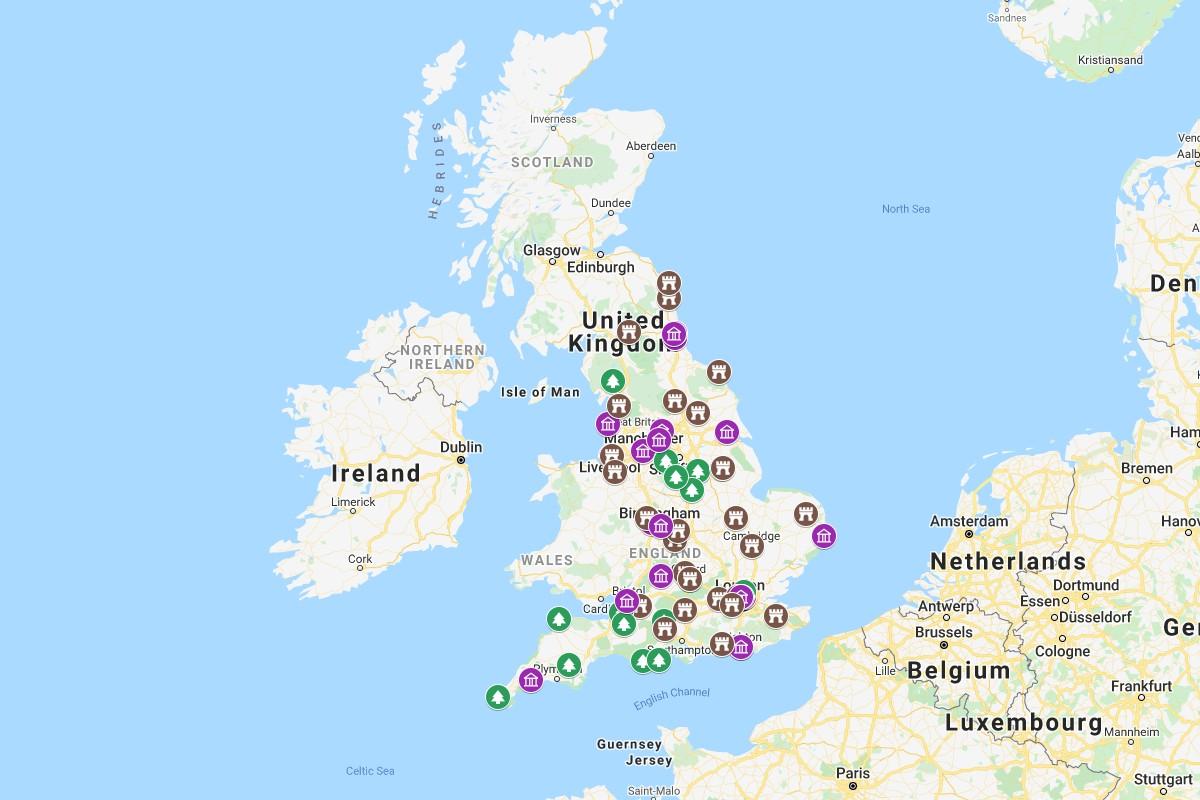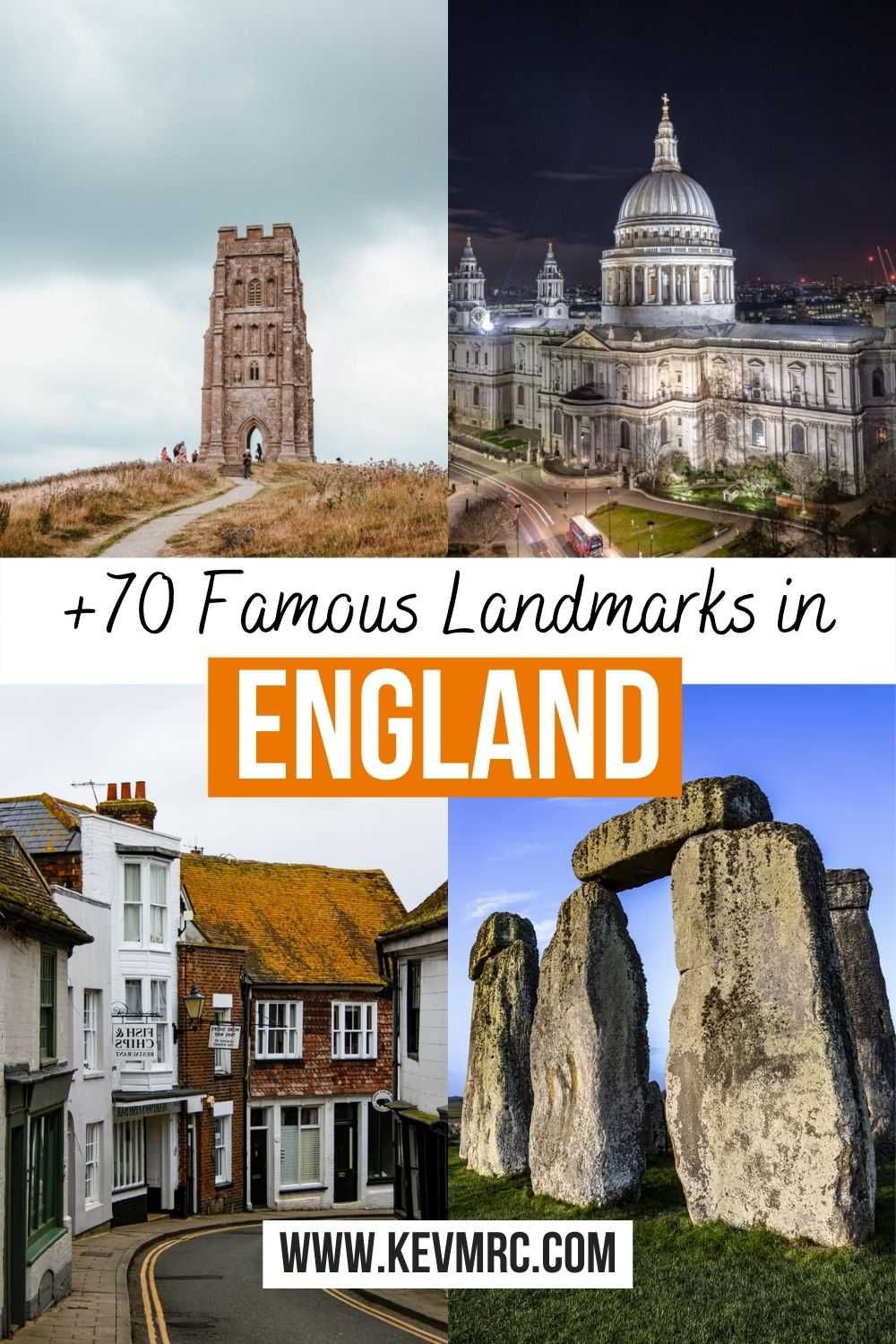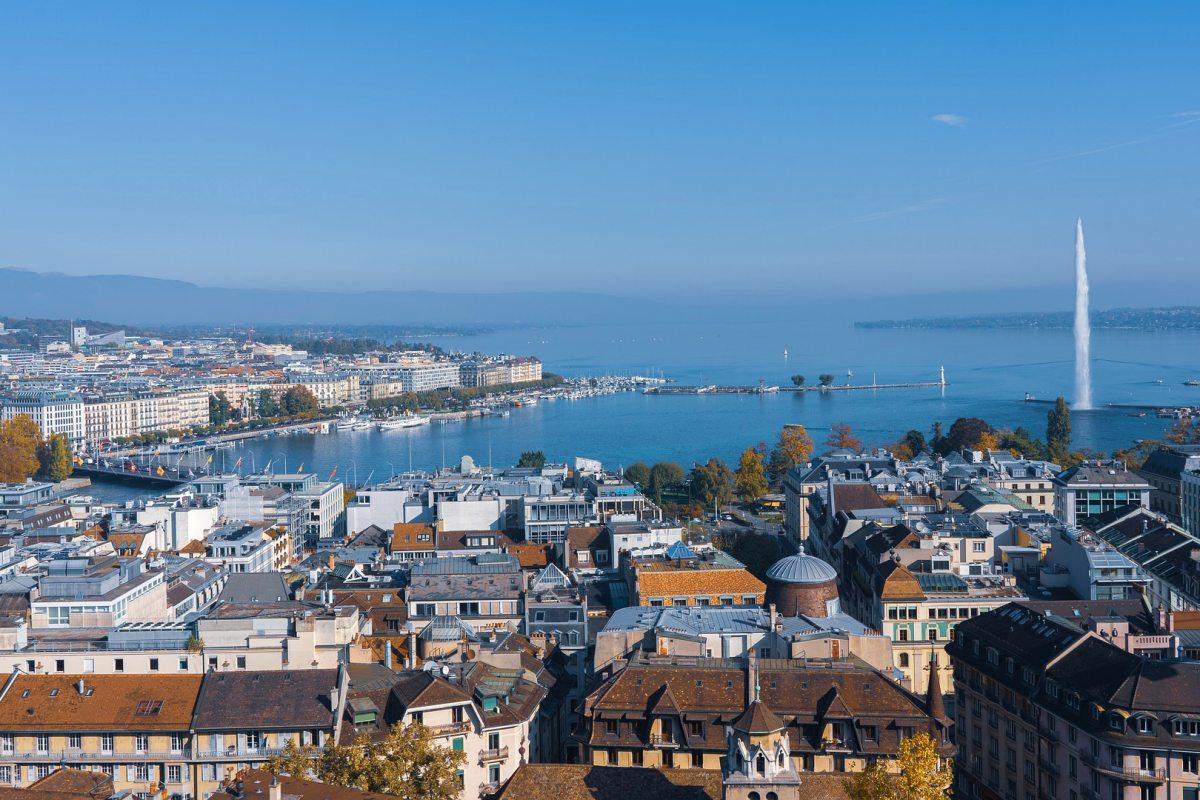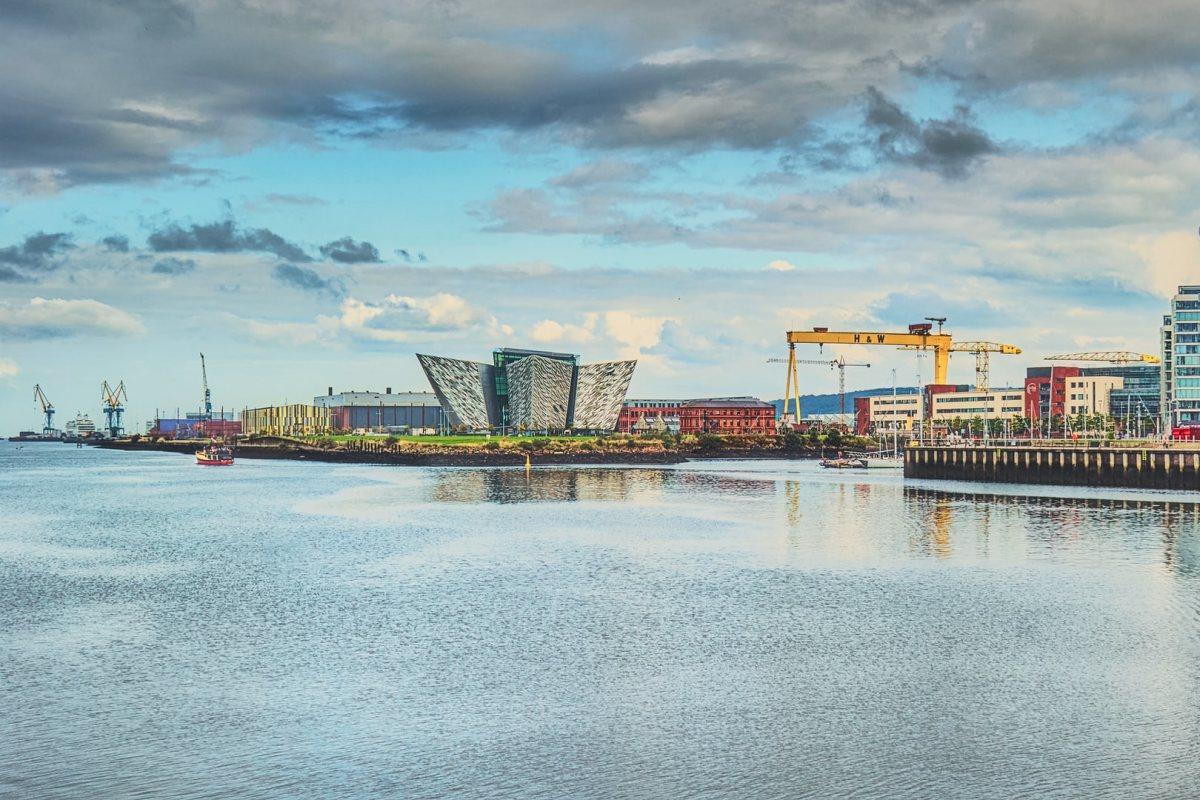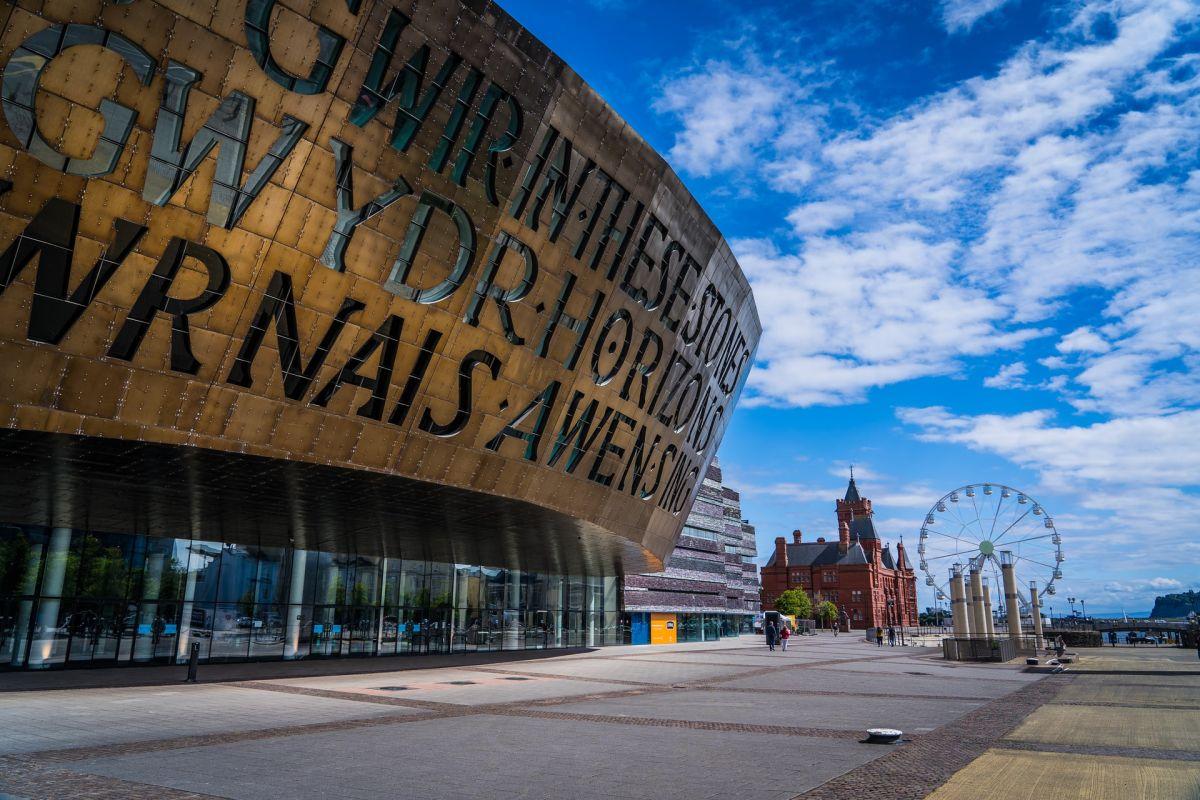71 Famous Landmarks in England You Need To Visit
England is part of the United Kingdom and covers most of the central and southern part of the British peninsula. At the root of a brilliant civilization and to the British Empire whose legacy is still very strong all over the world, England is best known for being the home to The Beatles, Harry Potter, tea and fish & chips.
But England is more than its clichés or its capital, London. The region is rich with a very diverse range of landscapes and an exceptional heritage that make it one of the best tourist destinations.
Wondering what are the famous landmarks in England?
Here are 71 of the most famous English landmarks, let’s jump right to it! 🏴
Full List of the 71 Famous English Landmarks
We can divide the famous landmarks of England in 3 different categories: the monuments that are all historical buildings (castles, religious buildings, ancient structures…); the museums and other constructions (exhibition rooms, bridges…); and the natural landmarks that are all kind of natural wonder.
Discover below our selection of the top 35 famous landmarks England has to offer, and 36 more for the bravest readers!
🏰 Famous monuments in England:
- Buckingham Palace
- Westminster Abbey
- Palace of Westminster
- Big Ben
- St. Paul’s Cathedral
- Tower of London
- Windsor Castle
- Hadrian’s Wall
- Alnwick Castle
- The Roman Baths
- Leeds Castle
- Warwick Castle
- York Minster
- Blenheim Palace
- Whitby Abbey
🏛 Museums & other famous buildings of England:
- British Museum
- Natural History Museum
- Tower Bridge
- Brighton Palace Pier
- Cotswolds
- Old Trafford
- Royal Albert Dock Liverpool
- Eden Project
🌳 Natural landmarks in England:
- Stonehenge
- Seven Sisters
- Durdle Door
- Old Harry Rocks
- Cheddar Gorge
- Hyde Park
- St Michael’s Mount
- Sherwood Forest
- Peak District National Park
- Dartmoor National Park
- Lake Windermere
- Glastonbury Tor
🔎 More famous England landmarks:
- Kensington Palace
- Tate Modern
- The National Gallery
- Hampton Court Palace
- Royal Pavilion
- Oxford Castle & Prison
- Oxford University
- Highclere Castle
- Clifton Suspension Bridge
- Salisbury Cathedral
- Arundel Castle
- Tunnels Beaches
- University of Cambridge
- Norwich Castle
- Peterborough Cathedral
- Southwold Pier
- Lincoln Castle
- Lincoln Cathedral
- Wollaton Hall
- Heights of Abraham
- Coventry Cathedral
- Dudley Zoo & Castle
- Wightwick Manor
- Birmingham Back to Backs
- Liverpool Cathedral
- Chester Cathedral
- Blackpool Tower
- Lancaster Castle
- The Angel of the North
- Victoria Tunnel
- Bamburgh Castle
- Gateshead Millennium Bridge
- Fountains Abbey
- The Piece Hall
- Standedge Tunnels
- The Humber Bridge
So, here’s the list of the top 71 major landmarks in England. To learn more and get details about each of them, keep reading below.👇
Famous Monuments in England
As already said, England is remarkable for its great history and for the famous royals who have run the country for centuries such as William the Conqueror, King Henry VIII, Queen Victoria or Queen Elizabeth II. As such, England houses thousands of stunning castles and manors, as well as wonderful churches that are definitely worth a visit.
Let’s discover together 15 of the best monuments of England! 🏰
1. Buckingham Palace
Buckingham Palace is nothing less than the residence of Queen Elizabeth II. Located in the heart of London between Trafalgar Square and Hyde Park, Buckingham Palace is one of the few royal palaces still in use today, and maybe the most famous England landmark.
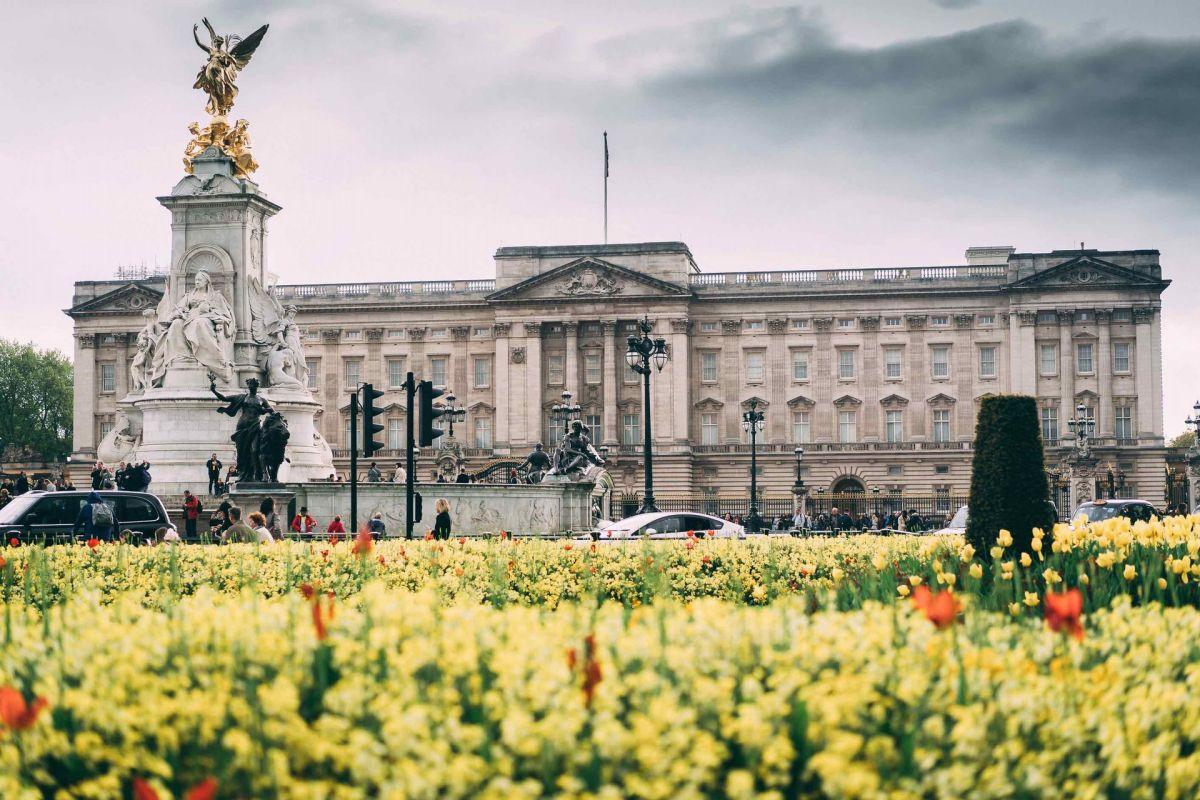
Originally built in 1703 for John Sheffield, the Duke of Buckingham, the palace was purchased by King George III in 1762 to serve as his private residence. Many modifications were then made over the centuries, until the reign of Queen Victoria who decided to make it the official residence of British sovereigns in 1837.
If there’s one thing you shouldn’t miss in London, it’s the changing of the guard. It takes place every day between May and July, and then every 2 days at 11am. This daily event draws huge crowds, so come early to pick a good spot and see something!
2. Westminster Abbey
Classified as a UNESCO heritage site, the Westminster Abbey is the most famous church in London. Beautiful both inside and out, the abbey is a masterpiece of Gothic style.
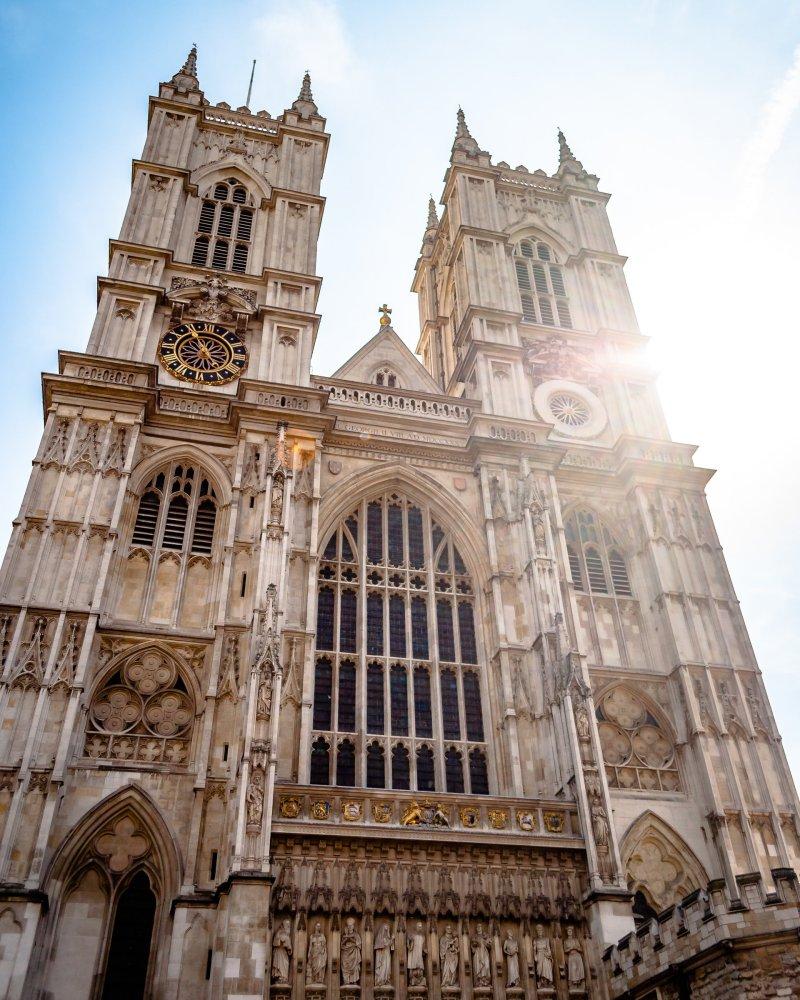
Built in the 13th century under the reign of King Henry III, Westminster Abbey is a true symbol of the British monarchy because it’s here that most of the important events take place, including weddings, coronations and national funerals.
Westminster Abbey houses the burials of most of the kings and queens of England, but also monuments to the glory of great English writers (Charles Dickens, William Shakespeare), statesmen or scientists (such as Isaac Newton).
3. Palace of Westminster
Located in the heart of London close to Westminster Abbey, the Palace of Westminster is one of the most iconic British landmarks and one of the most photographed monuments in all the UK.
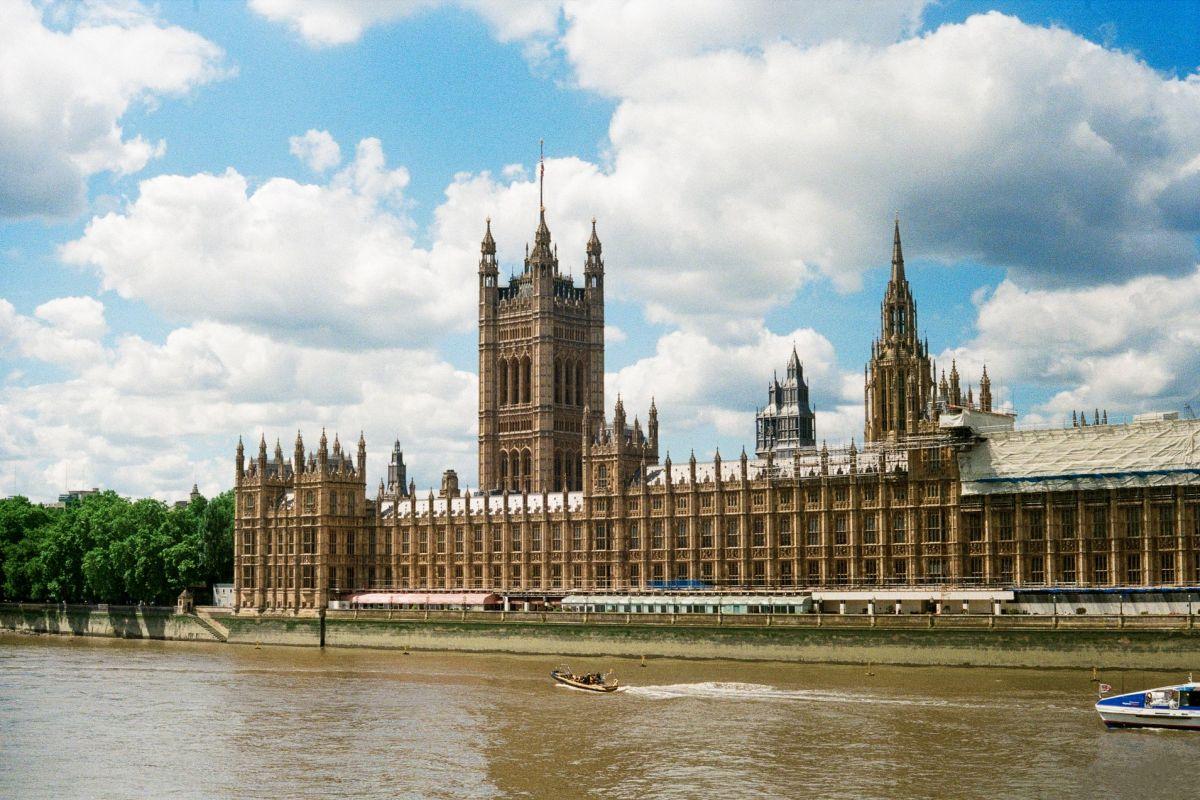
Built in the 11th century, the Palace of Westminster was originally the main residence of the Kings of England until 1531 when a fire destroyed part of the building. In order to limit the expenses, Henry VII renovated it slightly and moved to the Palace of Whitehall nearby. From then on, the Palace of Westminster is used as the seat of both Houses of Parliament and as a court of law.
The palace is simply gigantic as it includes 1,200 rooms, 3.5 km of corridors, 11 courtyards, 100 staircases, a 290-meter long facade overlooking the Thames and of course the Clock Tower, known as Big Ben.
4. Big Ben
Attached to the Palace of Westminster, the Big Ben is to London what the Eiffel Tower is to Paris: the symbol of the city!
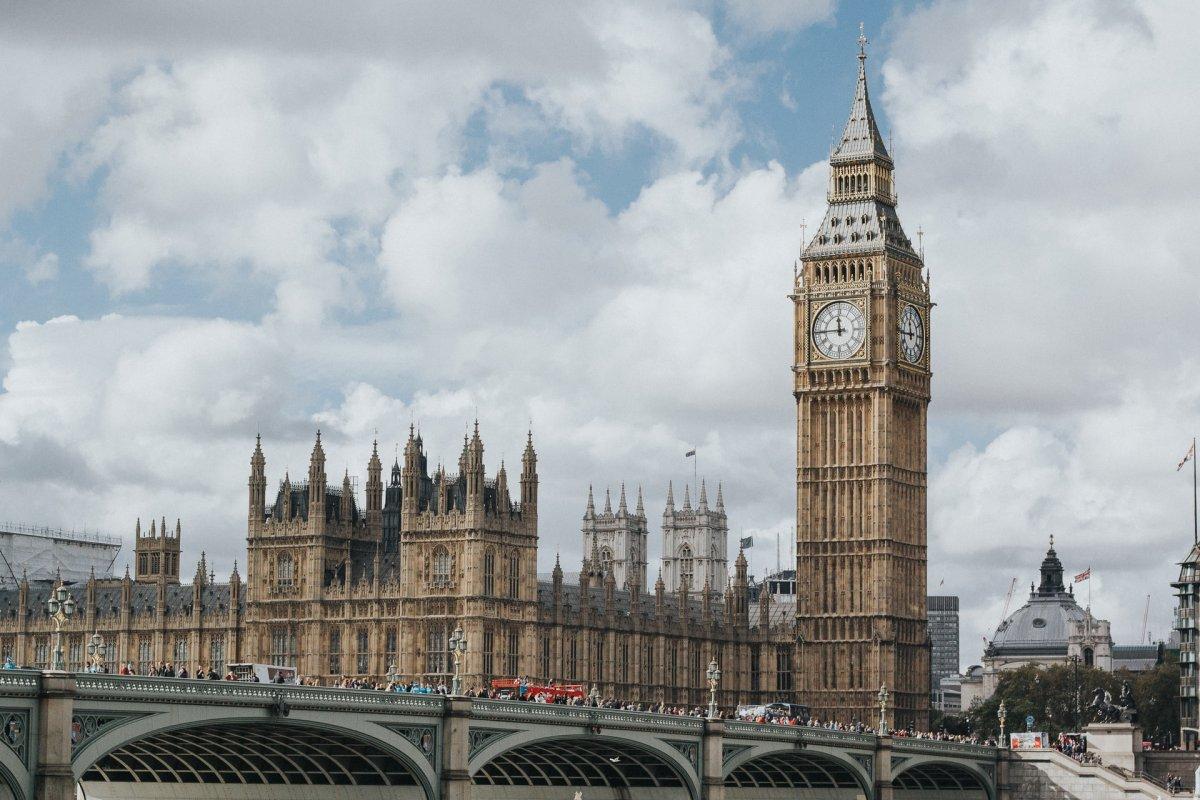
This impressive 96 meter high gothic clock was completed in 1858 by Benjamin Hall. In 1923, the BBC radio transmitted for the first time the chimes of the Big Ben to announce the New Year. This practice became a tradition and even today, Londoners celebrate the new year with the sound of the Big Ben. It’s said that the sound of this 13.5 ton bell can be heard up to 6 kilometers away!
Long known as the Clock Tower, it was renamed the Elizabeth Tower in 2012 on the honor Queen Elizabeth II’s Diamond Jubilee. Unfortunately, the Big Ben is only accessible to British residents for security reasons.
5. St. Paul’s Cathedral
Located in the financial district of the City of London, St. Paul’s Cathedral is one of the oldest monuments in town along with the Tower of London. It’s also one of the most visited monuments with 2 million visitors every year.
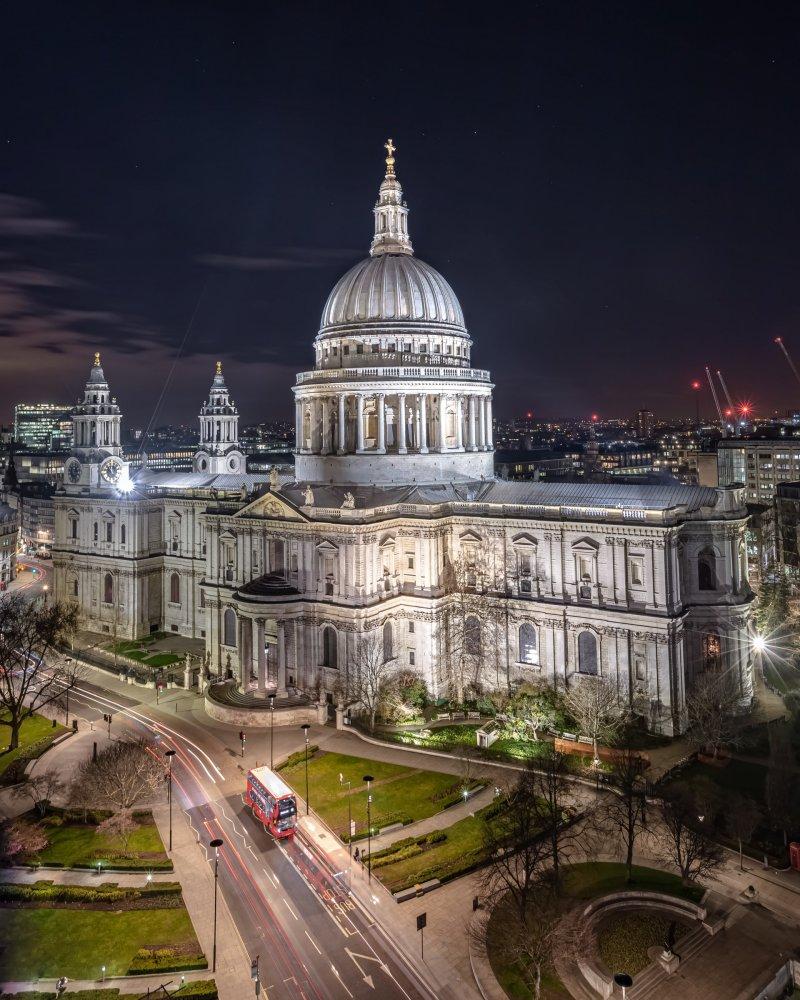
Completed in 1710 by Christopher Wren in a style mixing classical and baroque architecture, St. Paul’s Cathedral as we know it today is in fact the fifth attempt. Indeed, the first St. Paul’s Cathedral was built in 604. Destroyed and rebuilt many times over the centuries, the fifth cathedral has finally survived and has hosted major events such as the funeral of Churchill and the wedding of Prince Charles and Lady Diana.
St. Paul’s Cathedral defines London’s city skyline thanks to its dome and bell towers designed to be seen from afar. Visitors can enjoy a stunning panoramic view from the dome.
6. Tower of London
Located near the Tower Bridge, the Tower of London is a massive fortress built in the early 11th century by William the Conqueror on the banks of the Thames.
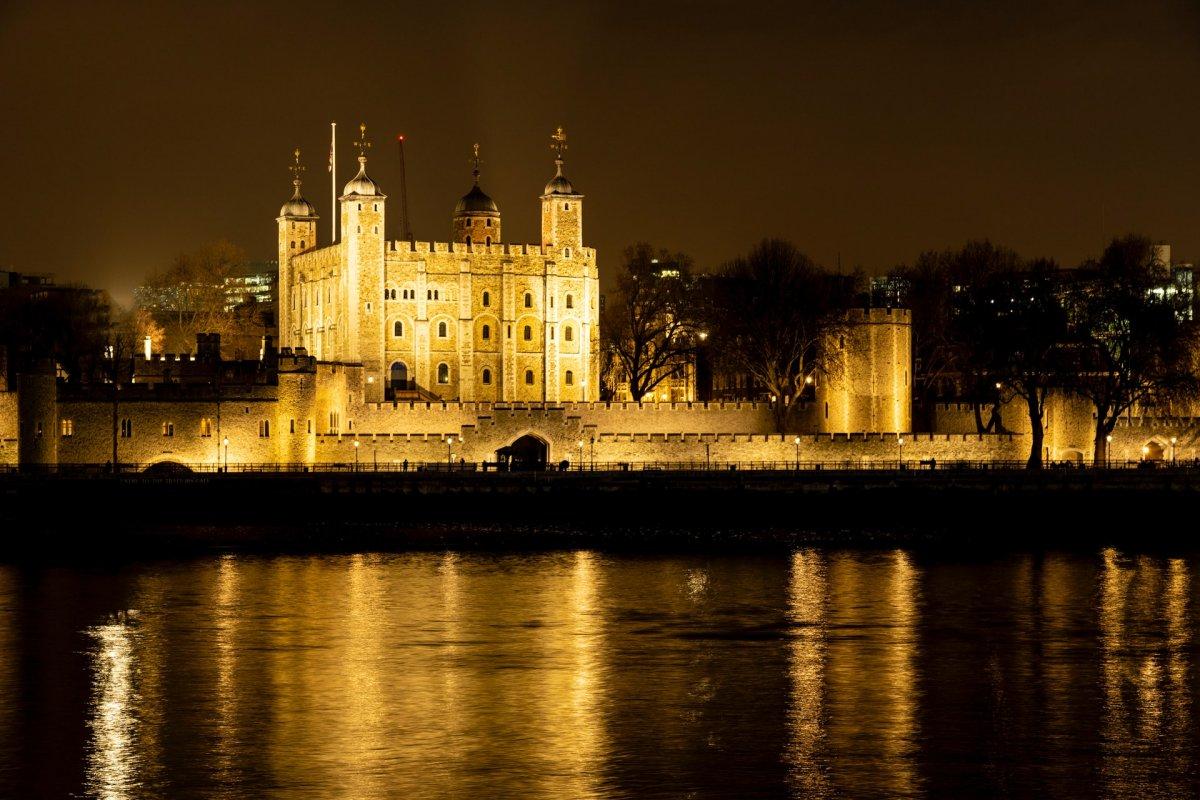
Listed as a UNESCO heritage site, the Tower of London is a fortress full of history. Indeed, the monument was used for various purposes: prison, place of execution (3 queens of England died there), armory, treasury or menagerie for example.
Today, the Tower of London has become a museum where the crown jewels and the coat of arms are kept. You can also see impressive jewels, ornaments and some of the most beautiful diamonds in the world.
7. Windsor Castle
Located about 50 kilometers west of London, Windsor Castle is both the oldest royal residence and the largest occupied castle in the world.
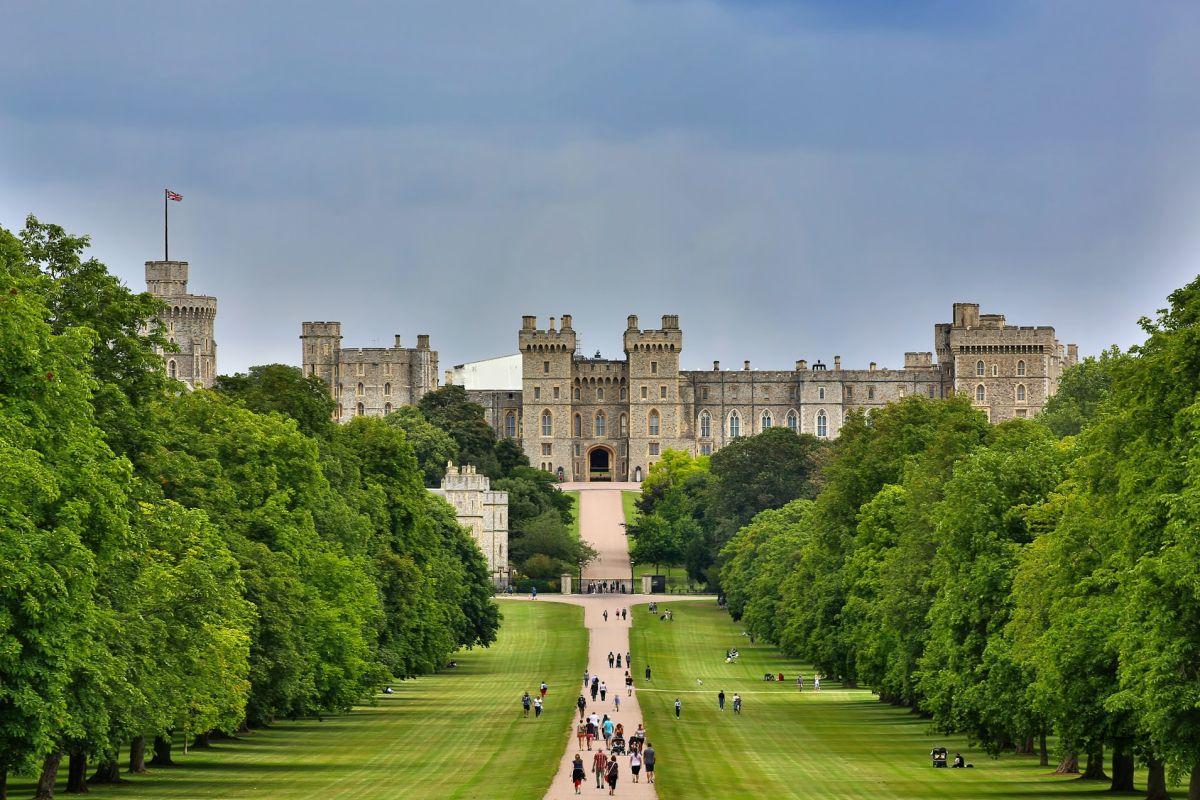
Built in the 11th century by William the Conqueror, Windsor Castle has been home to generations of British sovereigns for 900 years. The estate where the castle stands was chosen for its proximity to a royal forest for hunting parties, but also because it provided easy access to London.
Windsor Castle is still one of the current residences of Queen Elizabeth II. The castle is used as the official royal residence when the Queen receives state visits, monarchs, politicians, presidents and public figures from around the world.
8. Hadrian’s Wall
Considered one of the most exceptional constructions in Great Britain in Roman times, the Hadrian’s Wall is located about 2h30 drive from Edinburgh.
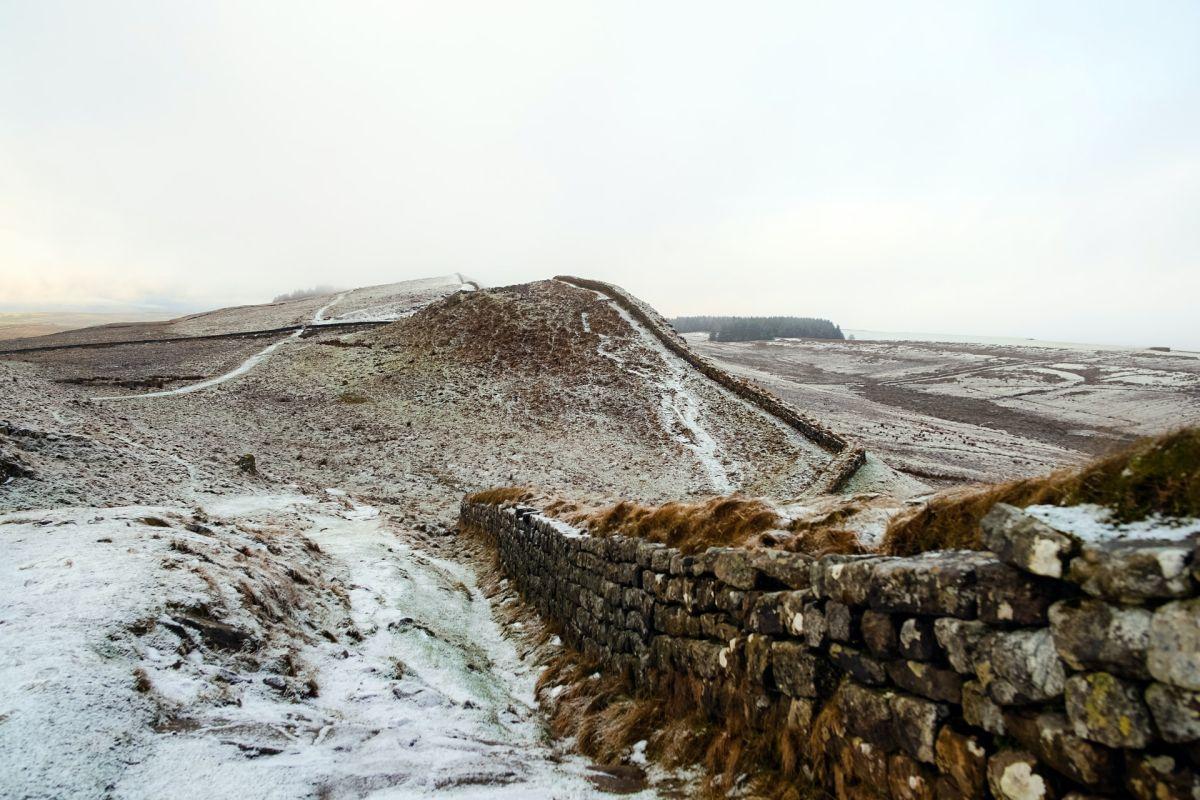
Built in 122 AD to protect the northwestern border of the country, it extends continuously for 122 kilometers to seal the border with Scotland. Its construction required the work of thousands of men over 200 years, and long sections are still intact today, 2,000 years later.
The Hadrian’s Wall is a UNESCO World Heritage Site since 1987 and a famous landmark in England. Visitors can walk along the wall and visit the surrounding museums that depict Roman life at that time.
9. Alnwick Castle
Located 45min drive from Newcastle, Alnwick Castle is the second largest inhabited castle in England after Windsor and one of the best winter break destinations in England.
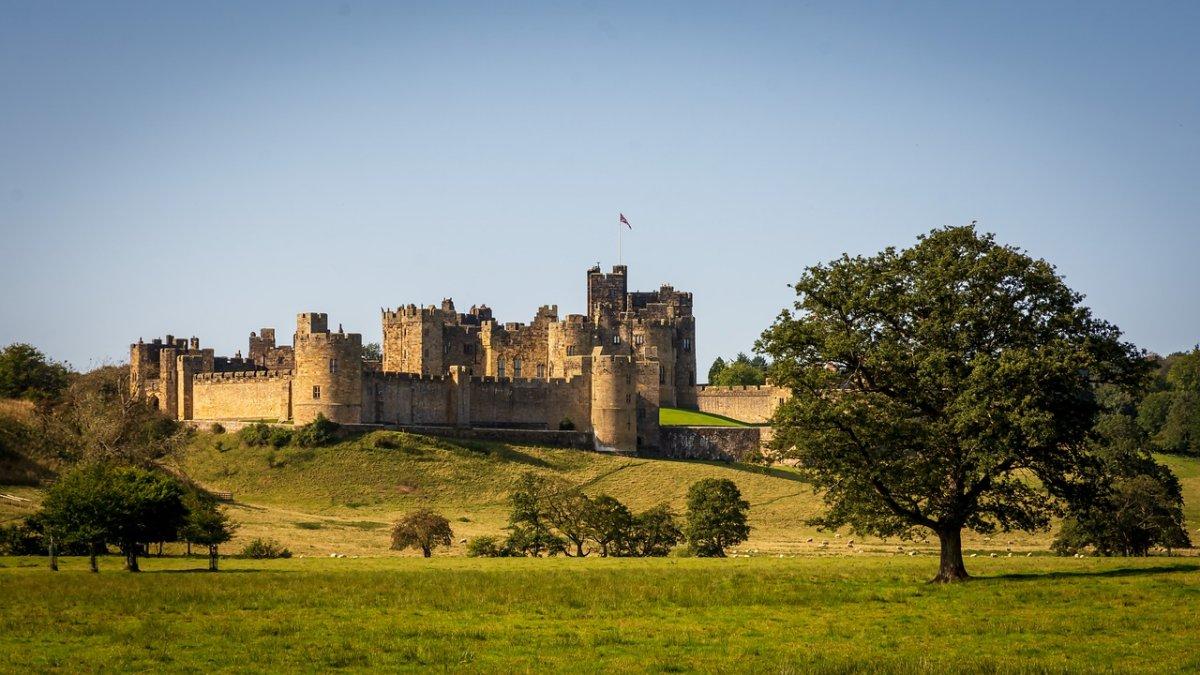
This castle where the 12th Duke of Northumberland currently lives was built in the 11th century, after the Norman conquest of England. Since then, it has undergone numerous restorations and modifications.
Alnwick Castle is famous for having lent its lawn for some scenes of the filming of Harry Potter. By the way, visitors can participate in an activity to learn how to fly on a broom on the lawn of the castle, like Harry.
10. The Roman Baths
Located in the UNESCO heritage city of Bath, the Roman Baths are one of the finest Roman archaeological sites in England.
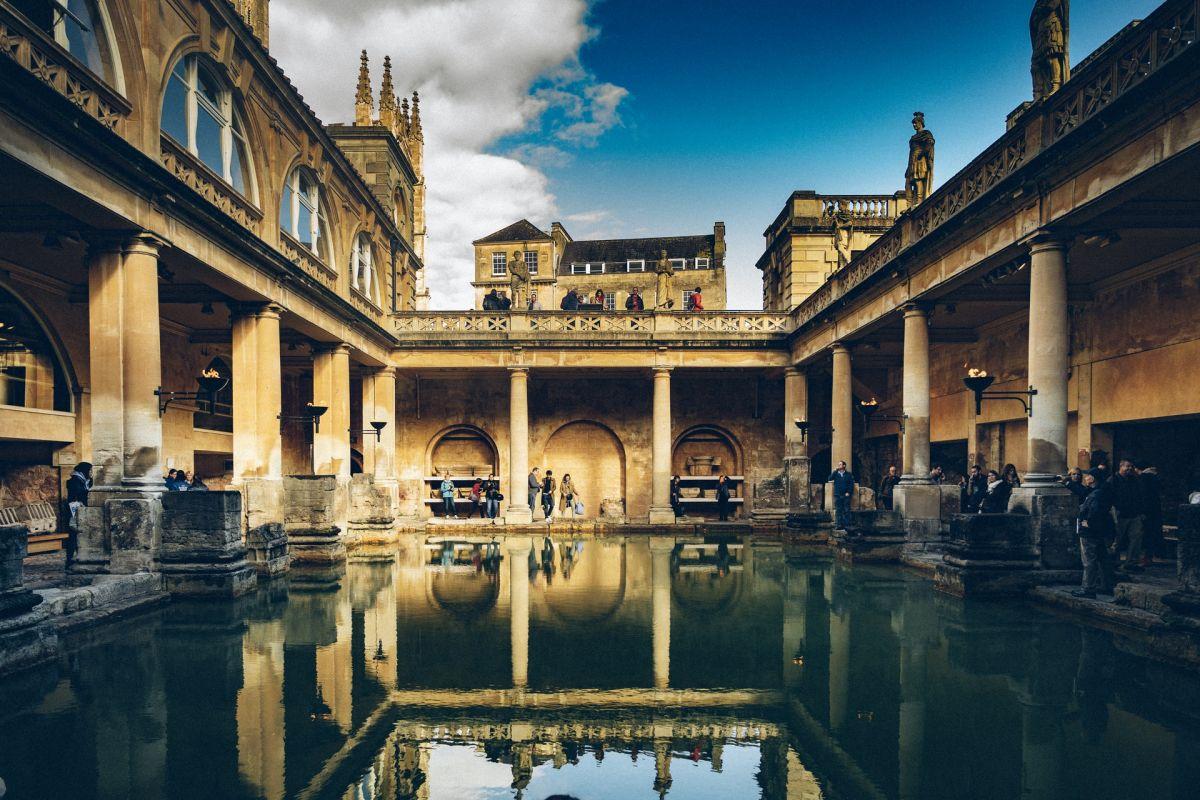
Although the baths date back to the Roman period, the hot spring was known before their arrival: the Celts were already using it! The temple was built around 60-70 AD, then improved during the 300 years that followed.
The baths consist of 4 main parts: the hot spring, the Roman temple, the baths and the museum displaying archaeological objects found on site. Since the 1970s, the Roman Baths are no longer accessible for bathing. However, if you wish to enjoy the benefits of Bath’s thermal water, you can visit the Thermae Bath Spa.
11. Leeds Castle
Located in Kent about 1h20 from London, Leeds Castle is a very famous monument in England with a history of nearly 900 years and an estate of over 200 hectares.
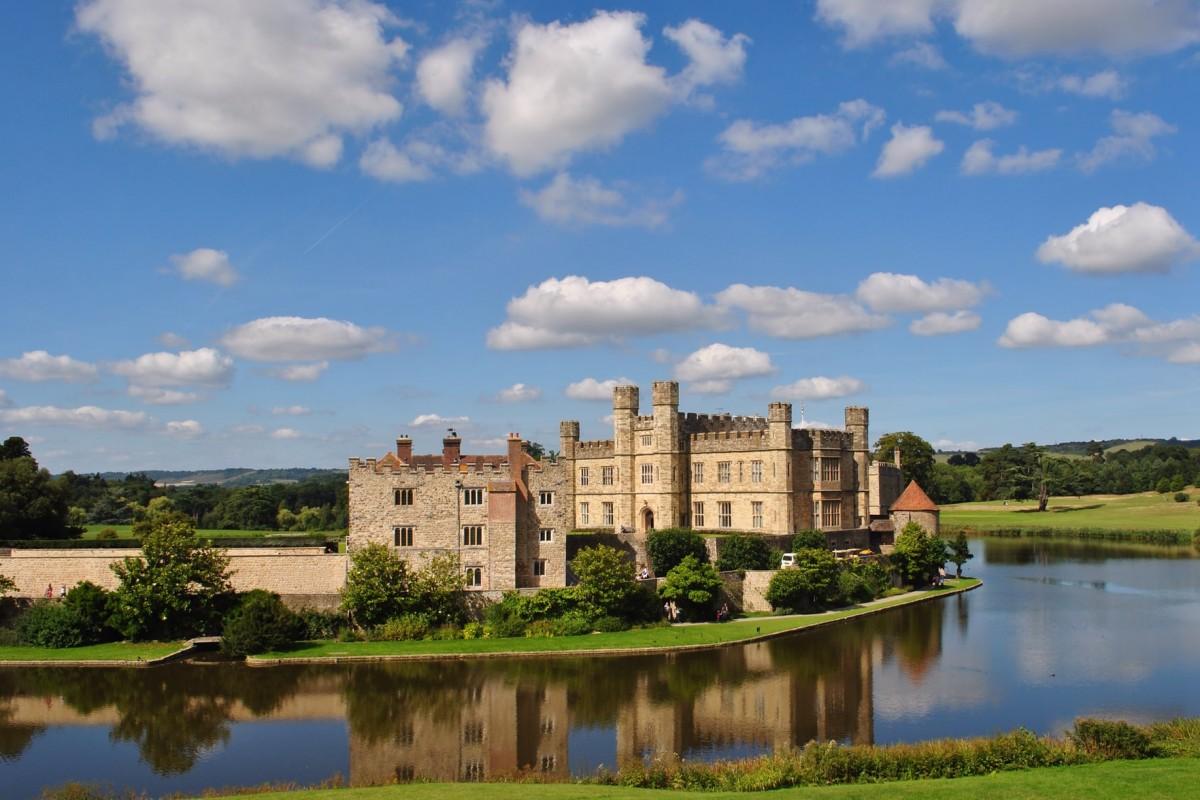
Built in 1119 to serve as a military post during the Norman invasion, Leeds Castle became the royal residence of King Edward I in the 13th century, who made many improvements. In the 16th century, King Henry VIII transformed the castle again for his queen, Catherine of Aragon. During the 20th century, the castle underwent further modifications until its opening to the public in 1976.
If the visit of the castle makes you travel back in time, the gardens are definitely the highlight of the visit. Tourists from all over the world come to get lost in the labyrinth or to discover the aviary of the castle.
12. Warwick Castle
Warwick Castle is located in the town of Warwick, in the county of Warwickshire close to the river Avon. This English castle is one of the best known examples of the 14th-century military architecture.
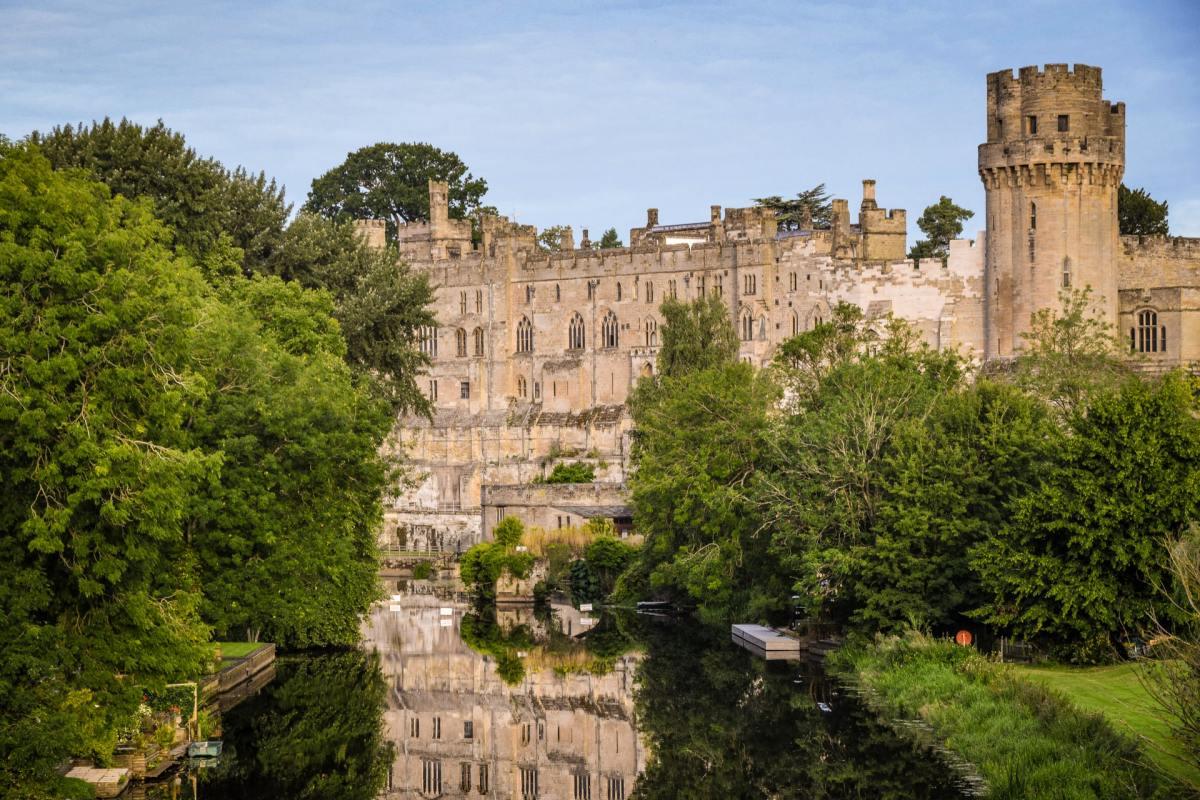
The castle was built on the orders of William the Conqueror in 1068, on the ruins of an ancient Saxon fortified construction. Despite assaults, fires, reconstructions and numerous changes of ownership, this medieval fortress is still standing today.
Located on the edge of a cliff, the view from the castle and the ramparts is absolutely stunning. Warwick Castle is the perfect attraction to discover in an original and entertaining way the secrets of medieval castles and the battles that took place there.
13. York Minster
York Minster, located in the medieval city of York, is the largest Gothic cathedral in Northern Europe with an area of 5,927 square meters.
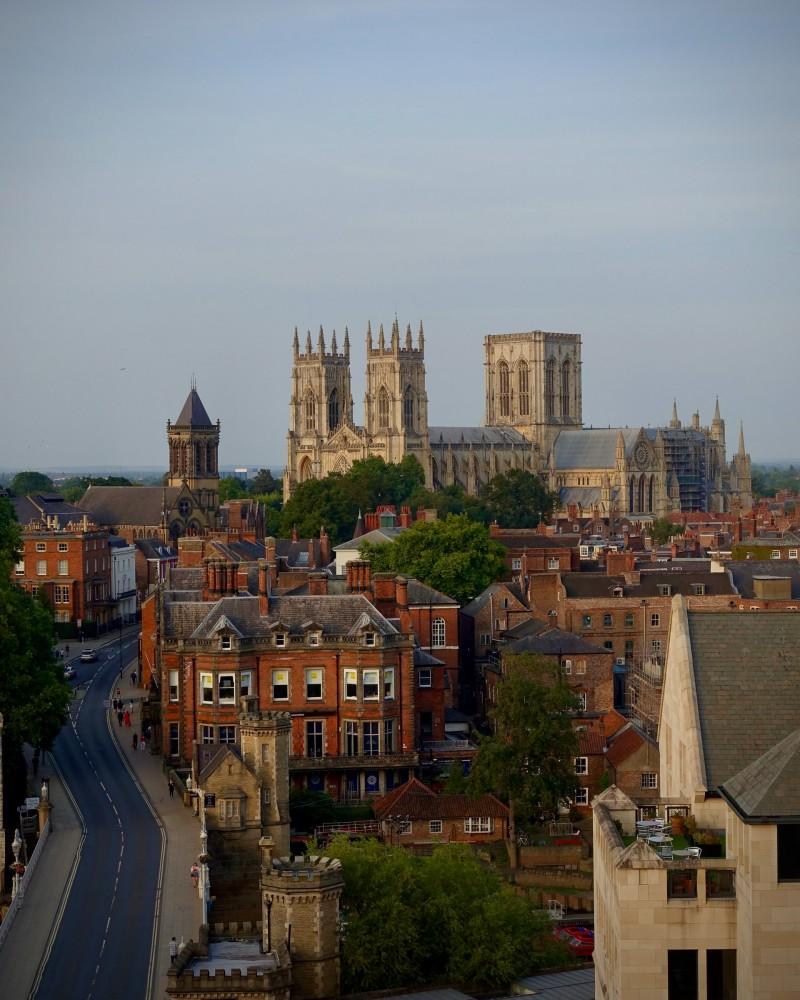
Originally, a first stone church dedicated to St. Peter was built in the 7th century on the occasion of the baptism of King Edwin of Northumbria. Destroyed over the years, the Archbishop of York, Walter de Gray, initiated in the 13th century the construction of the Gothic cathedral, which lasted about 250 years.
Today, this marvel of architecture impresses with its wonderful vaulted nave, its 15th-century organ, its beautiful stained glass windows and its tower accessible via a staircase of 275 steps. Don’t hesitate to climb it if you can, it’s one of the best things to do in York because of the wonderful panoramic view you’ll have from there.
14. Blenheim Palace
Located in Woodstock near Oxford, Blenheim Palace is a stunning manor house in the heart of the English countryside listed as a UNESCO World Heritage Site since 1987.
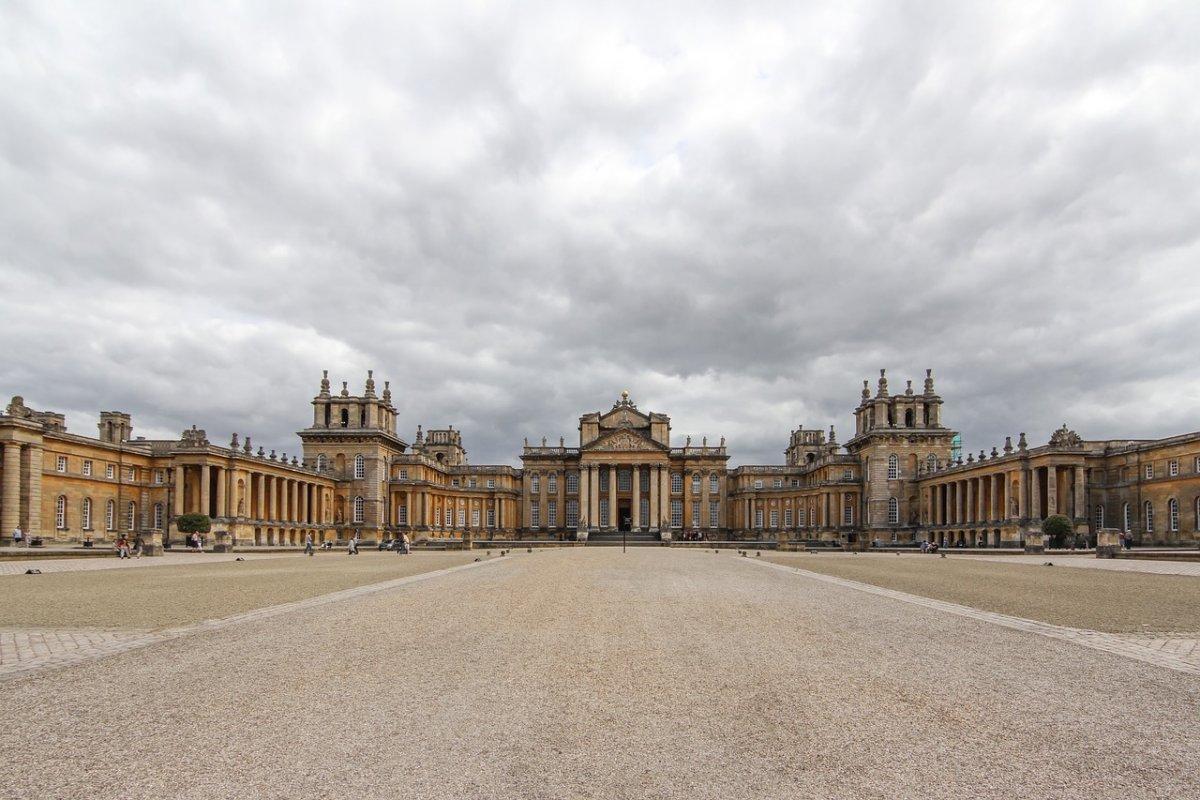
This marvel of British Baroque architecture built in 1722 isn’t a royal residence, but a private residence. Blenheim Palace was made famous by the Duke of Marlborough, but mostly because it’s the birthplace of Winston Churchill, grandson of the 7th Duke of Marlborough and famous Prime Minister of the United Kingdom (1940-1955).
Impressive by its size, the magnificent drawing rooms and its gardens will certainly blow you away. The palace also houses a permanent exhibition dedicated to Churchill and a floor dedicated the 300-year history of the palace.
15. Whitby Abbey
Whitby Abbey is located on the northeast coast of England, in Yorkshire. Today, only the facade, a few arches and some columns tell us about the eventful story of the abbey.
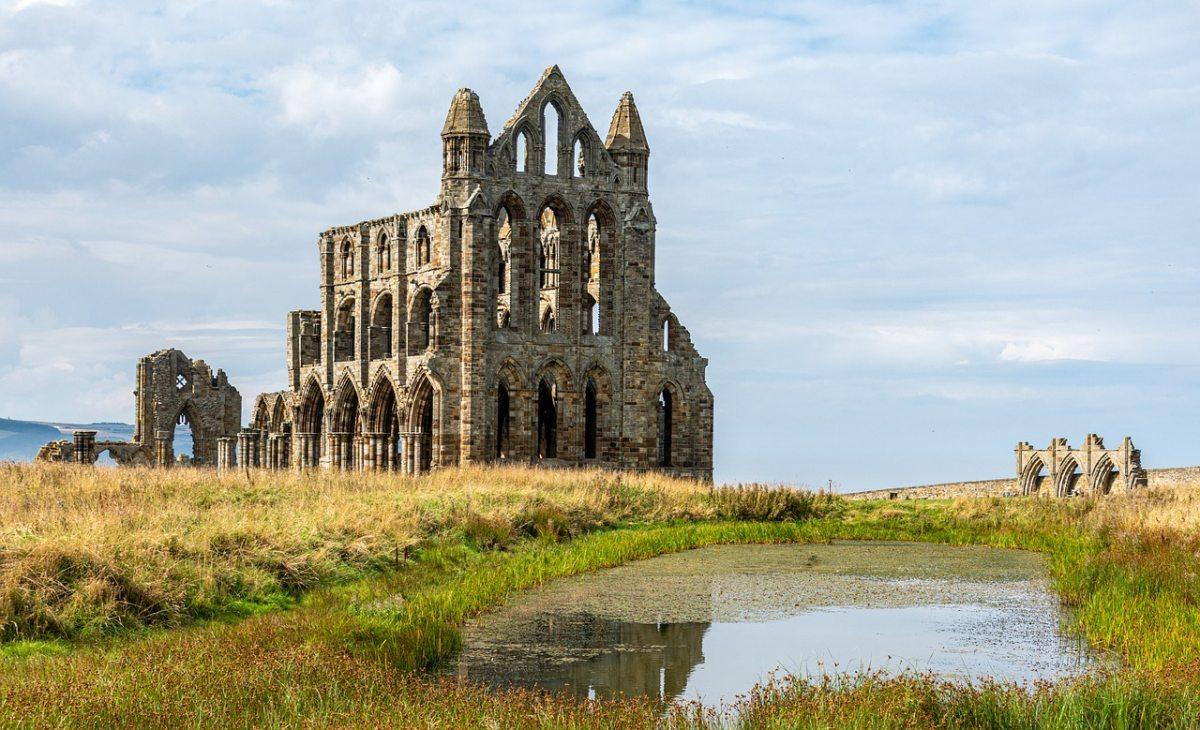
Whitby Abbey was founded in 657 by King Oswiu of Northumbria and housed a community of nuns and monks. At the end of the 9th century the abbey was left abandoned and destroyed by the Viking invasion. It was rebuilt in the middle of the 11th century by the De Percy family, and then damaged again in the 16th century and by the 2 World Wars.
From the top of its green hill, protected from the North Sea by the steep cliffs, the ruins of the abbey still dominate the harbor and the small town of Whitby for more than 1,300 years.
Museums & Other Famous Buildings of England
As for the monuments, there are tons of incredible buildings in England. We couldn’t list them all, so here are 8 England famous buildings, from museums to bridges and gardens.
Let’s go! 🏛
16. British Museum
Located in the heart of Bloomsbury, the British Museum is known as the oldest museum in the world. With 6 million visitors every year, it’s the most popular tourist attraction in the UK.
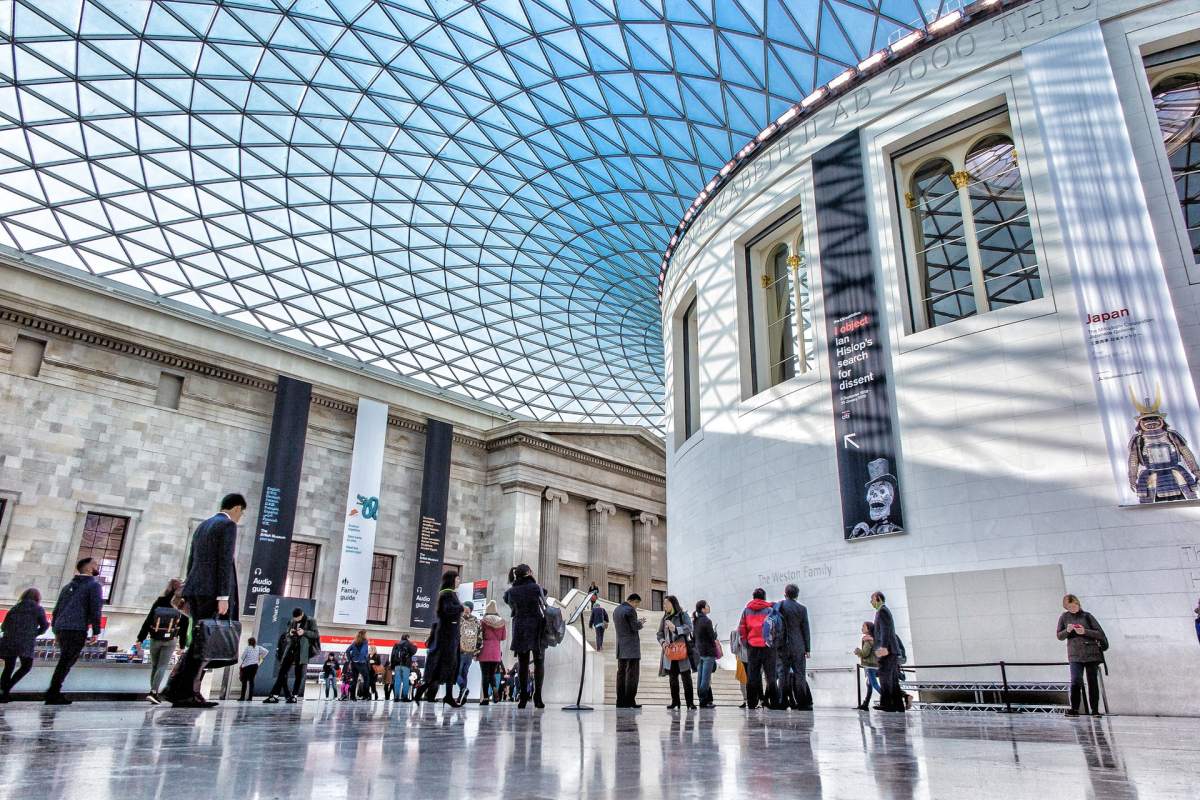
The British Museum was established in 1753 to house the collections of the physician and scientist Sir Hans Sloane and the Earl of Oxford. When it opened to the public in 1759, the British Museum had around 80,000 objects.
Today, the British Museum houses one of the most important collections in the world with more than 7 million objects from all continents kept there. Entry is free, so make sure not to miss it!
17. Natural History Museum
Located in Kensington, the Natural History Museum houses some of the most important life and earth science collections collected from around the world, including the collections of the famous explorers and naturalists James Cook and Charles Darwin.
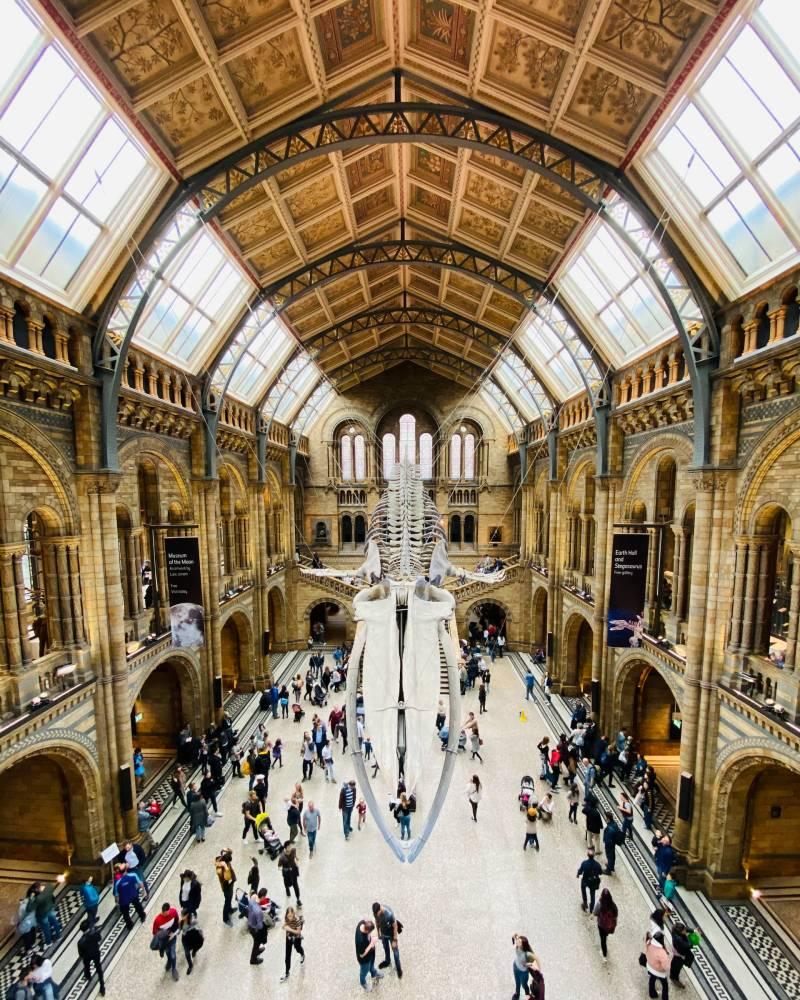
Housed in a magnificent Victorian building built in 1880, the museum is home to nearly 70 million specimens in five main collections: zoology, entomology, paleontology, mineralogy and botany.
Visitors particularly love discovering the huge dinosaur and blue whale skeletons, the unique species of insects, fossils, and the interactive exhibits on earthquakes and volcanoes.
18. Tower Bridge
Located in London Bridge neighborhood, Tower Bridge is one of the most iconic landmarks of the city. This bascule bridge that crosses the Thames was the most sophisticated in the world when it was built.
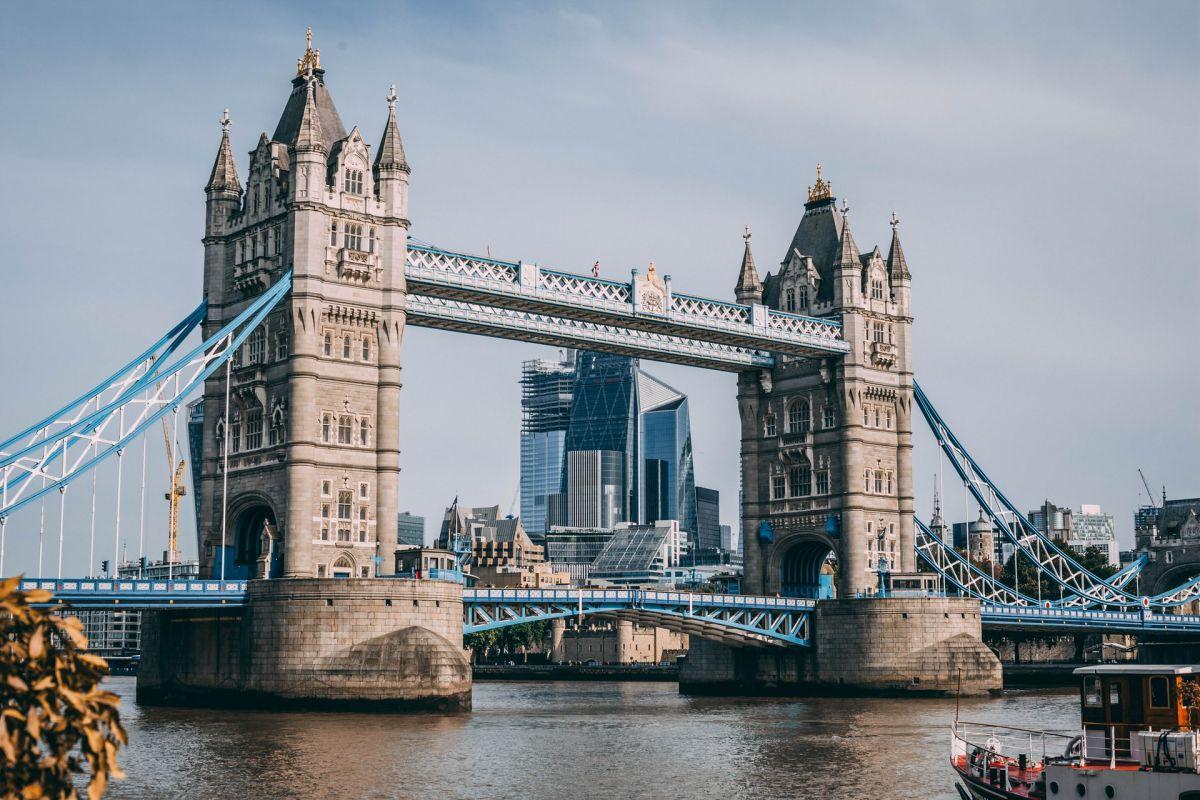
Completed in 1894, the Tower Bridge is easily recognizable with its 2 huge gothic style towers and its blue frames. The lower walkway is tilted to allow large ships to pass. The bridge lifts have become a real show that people can see 800 times a year.
The Tower Bridge houses a museum in its towers that can be visited, but you can simply cross it on the upper footbridge, which is entirely pedestrian. The view of London and the river will delight you!
19. Brighton Palace Pier
The Brighton Palace Pier is an amusement park set on a pier that juts out into the sea in the coastal town of Brighton, in southeast England.
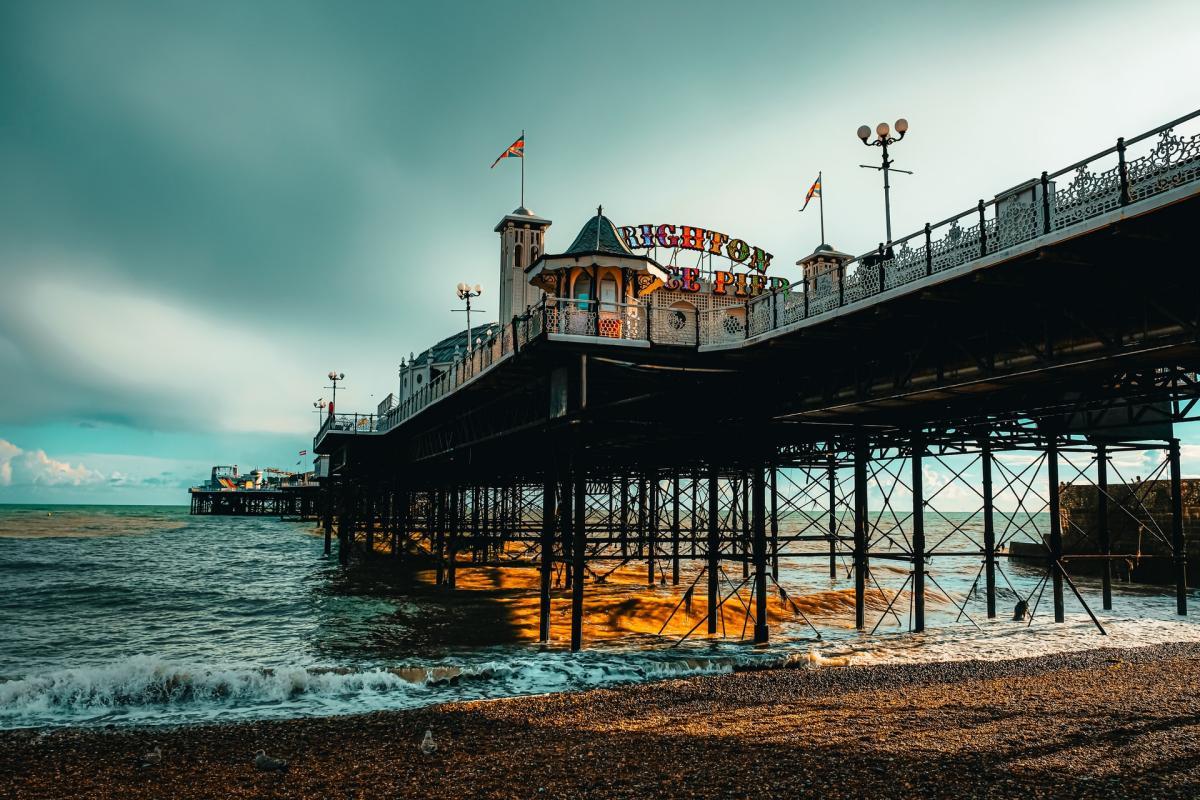
The 525-meter long pier was opened in 1899, during the Victorian era. The wooden Brighton Palace Pier hosts a large permanent fun fair with restaurants, bars and game rooms.
The setting, with waves as far as the eye can see and Brighton’s waterfront is very charming, and the lively atmosphere makes it a must-see on a visit to Brighton.
20. Cotswolds
The Cotswolds is a region of small historic villages in the southwest of England, stretching over several counties and covering almost 150 kilometers.
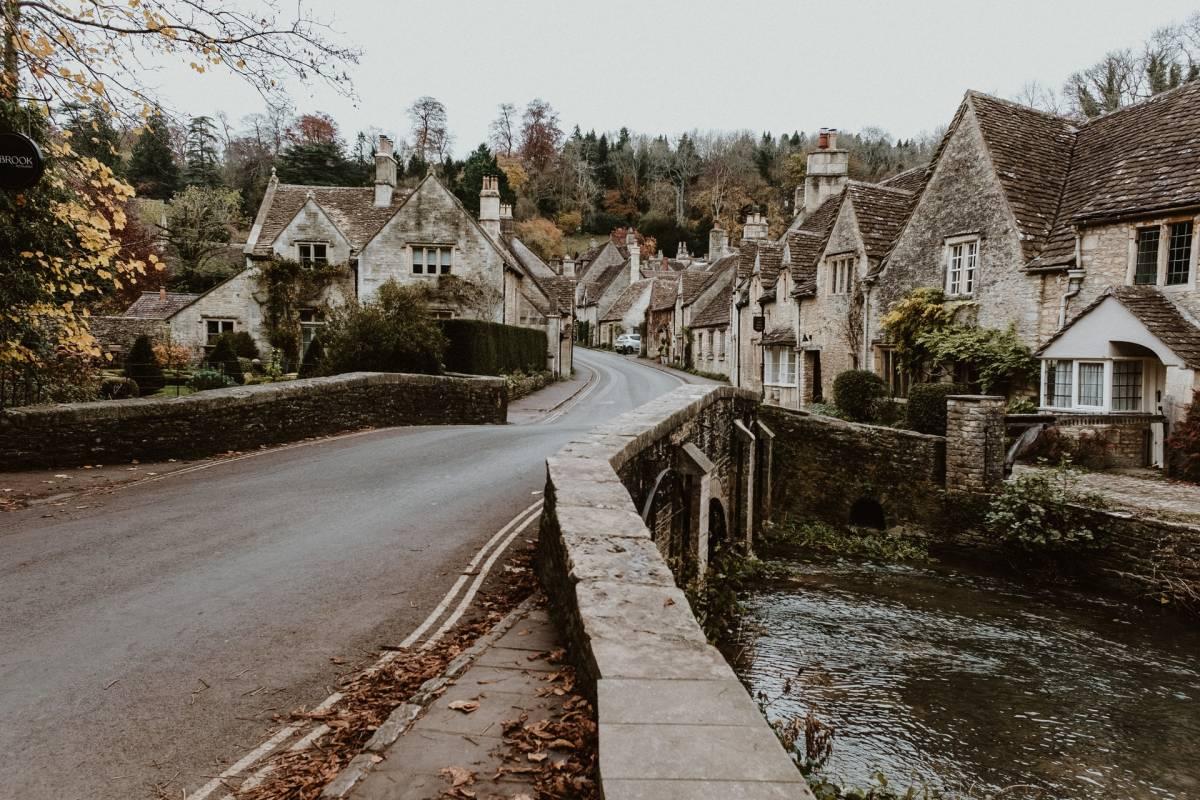
The Cotswolds is a chain of hills, a place frozen in the past: because of the relief, the train couldn’t cross the region, which has therefore remained away from the modern world and has preserved very picturesque old villages, all in old stones. Now, the Cotswolds are home to some of the most beautiful villages in England.
Visiting the Cotswolds is experiencing the English countryside: you can admire the typical cottages with their thatched roofs, visit some historical places, have tea in a cute café or a beer in one of the Cotswolds’ best pubs. Among the best Cotswold villages, we can list Chipping Camden, Bibury or Castle Combe.
21. Old Trafford
Located in the city of Manchester, Old Trafford is the 3rd largest stadium in England with a capacity of 76,000 seats, and the home of the legendary Manchester United soccer club.

Built at the beginning of the 20th century in 1909, Old Trafford was destroyed by the German bombing during the Second World War. The stadium was rebuilt in the 1950s with floodlights, allowing the club to host European games as well as the 1966 World Cup.
Also known as “The Theatre of Dreams”, Old Trafford is now a prestigious stadium that has welcomed the world’s greatest soccer players such as David Beckham, Paul Scholes or Cristiano Ronaldo.
22. Royal Albert Dock Liverpool
Listed as a UNESCO World Heritage Site since 2004, the Royal Albert Dock was one of the most important harbors for the world’s maritime trade in the 19th century and is today, the main attraction of Liverpool.
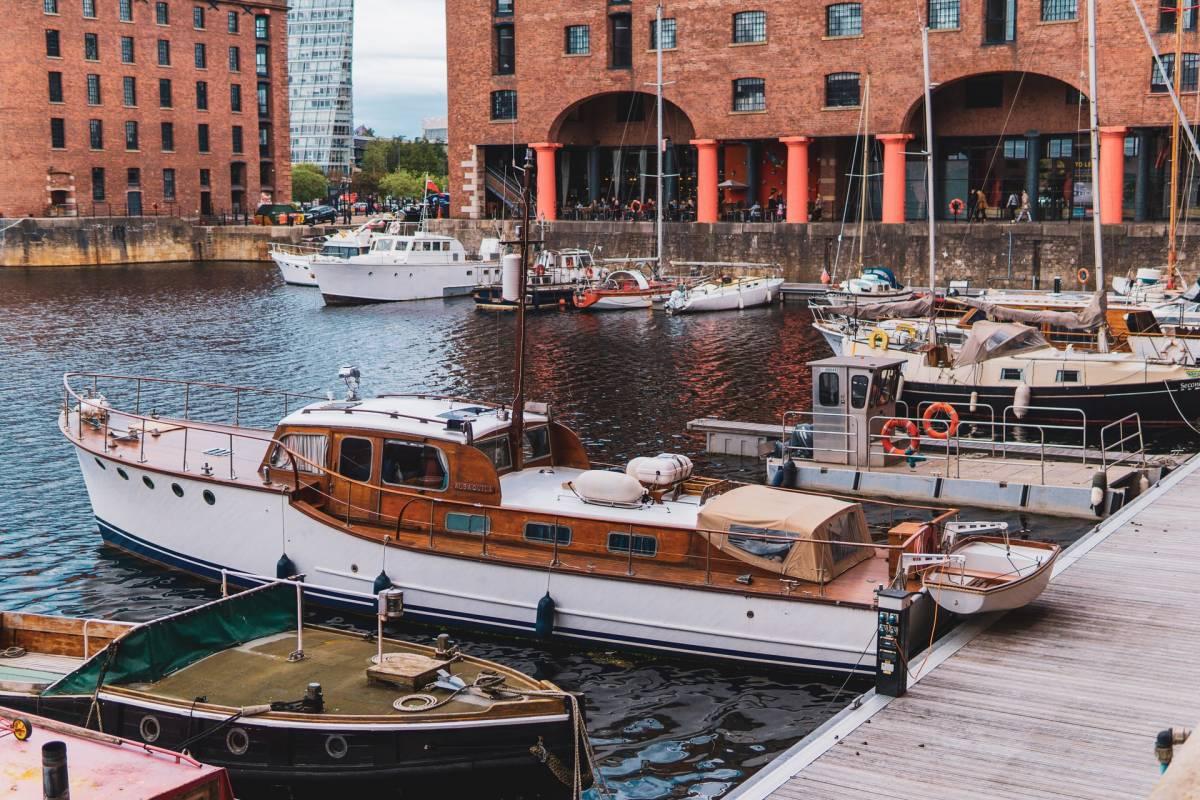
This port complex was born in the early 18th century and grew thanks to the triangular trade which involved the sale of slaves. The abolition of slavery in 1807 forced the port to shift to other activities, especially to passenger transport. After a long period of economic decline, Liverpool reinvented itself at the end of the 1990s with the rehabilitation of the docks.
The Albert Dock now houses restaurants, stores, galleries, the Slavery Museum and it has become of the most visited places in the UK.
23. Eden Project
Located in the beautiful Cornish countryside in southwest England, the Eden Project is a tropical and Mediterranean biome housed in the world’s largest greenhouses.
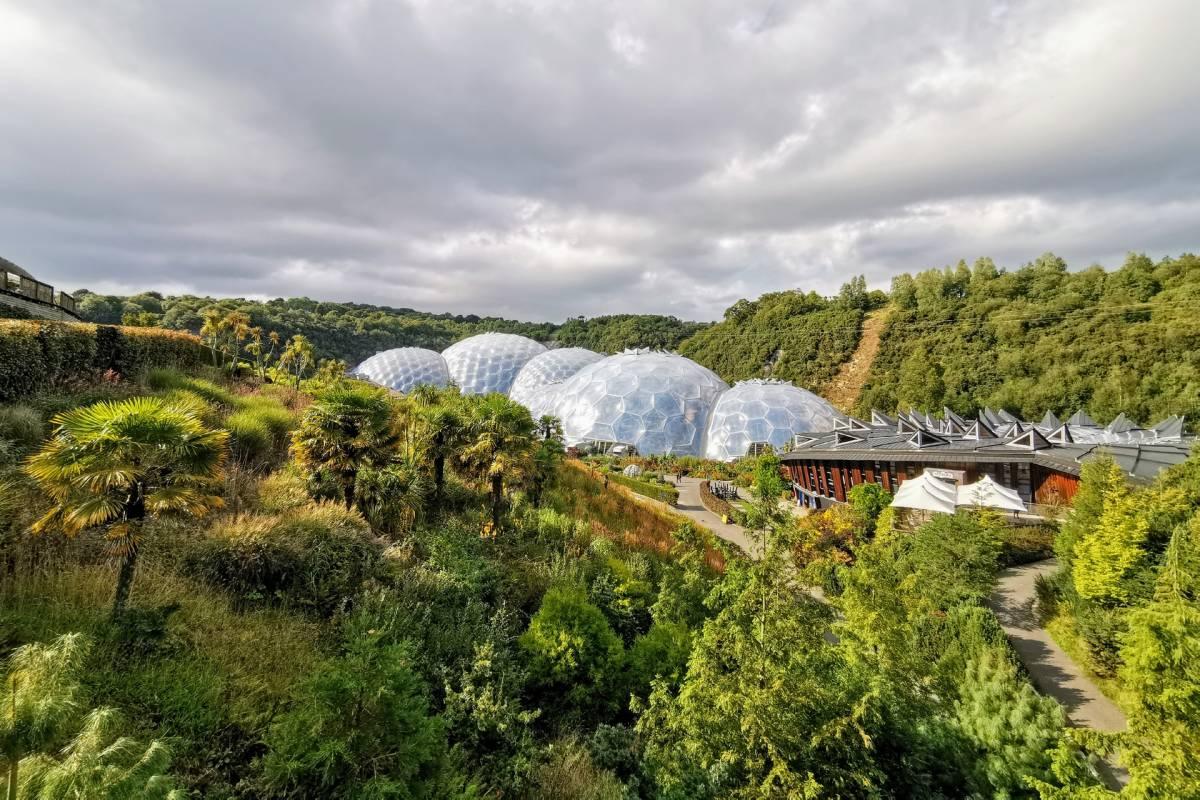
Opened in 2001 in a former clay mine, the Eden Project was born of the desire to demonstrate the ability to use nature to regenerate a site deteriorated by human activity.
This environmental complex made up of 8 domes of futuristic architecture and beautiful gardens is home to nearly a million plants of various origins. Today, it is a must-see tourist attraction with more than ten million visitors since its opening.
Natural Landmarks in England
Because England is rather small, many travelers think it may not be the best destination for outside activities and nature lovers. Actually, England bursts with wonderful sights and nature wonders that anyone should visit at least once in lifetime.
Here are 11 major landmarks of England that are natural right below! 🌳
24. Stonehenge
Located about 2 hours southwest of London, Stonehenge is an impressive prehistoric site composed of 460 stones forming the largest circle of dolmens in Europe.
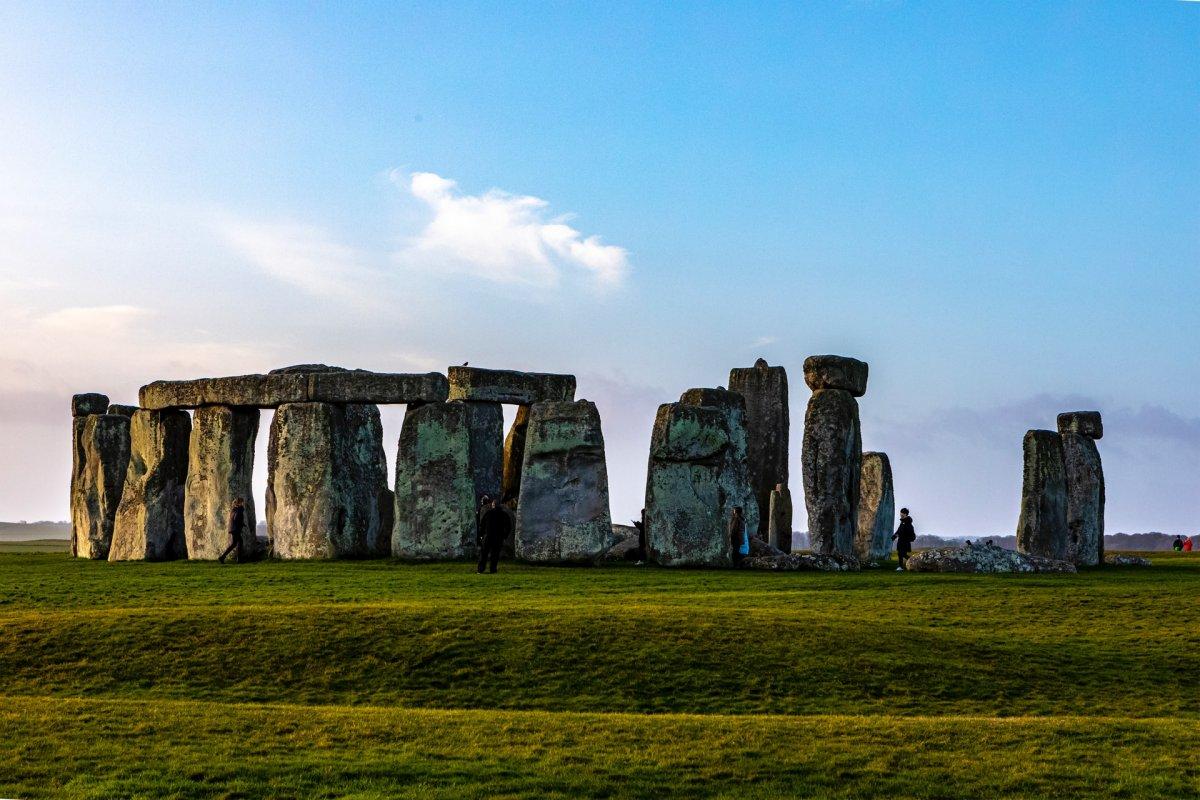
Research has shown that the 4 concentric circles of Stonehenge date back to 2500 BC. Each circle is made of several stones weighing a few tons. There are stones of all sizes, up to 10 meters high, some of them being placed vertically and others horizontally.
Despite the various archaeological excavations, several theories about the origin of the site are still open. But it the most likely explanation is that Stonehenge was an astronomical site that helped people to identify the seasons and time. The site is listed as a UNESCO World Heritage Site since 1986 and more than a million people come to visit it each year.
25. Seven Sisters
Located in Sussex between Brighton and Eastbourne about 2 hours from London, the Seven Sisters are chalk cliffs that stretch along the English Channel. Along with the white cliffs of Dover, it’s a very popular spot in the UK.
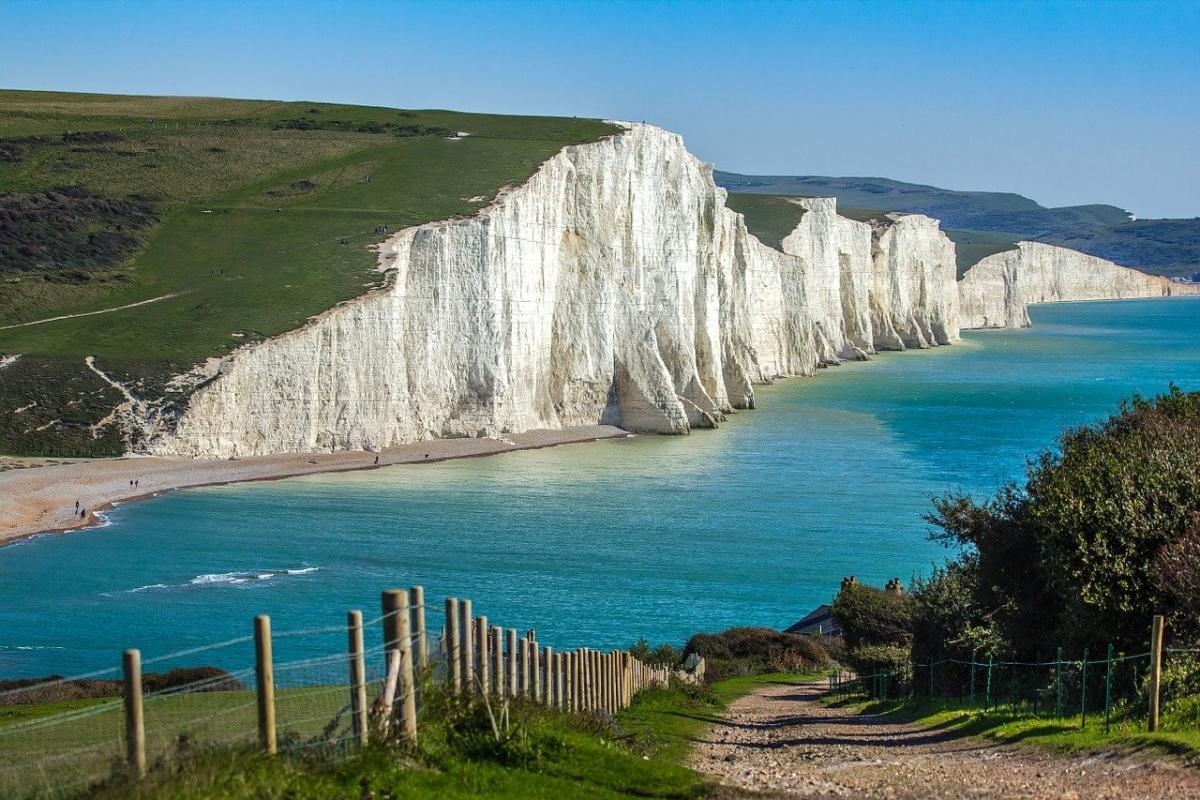
The cliffs stretch over 21 kilometers of coastline and have 8 hills and peaks. The Seven Sisters cliffs are very similar to the cliffs of Etretat located on the other side of the English Channel, in France.
To discover the cliffs, you can take the South Downs Way, a 160 kilometer-long hiking trail between Winchester and Eastbourne, well-known for its last section along the wonderful white sandstone cliffs.
26. Durdle Door
Durdle Door is the most famous spot of the Jurassic Coast, located about 2 hours from Bristol in South England.
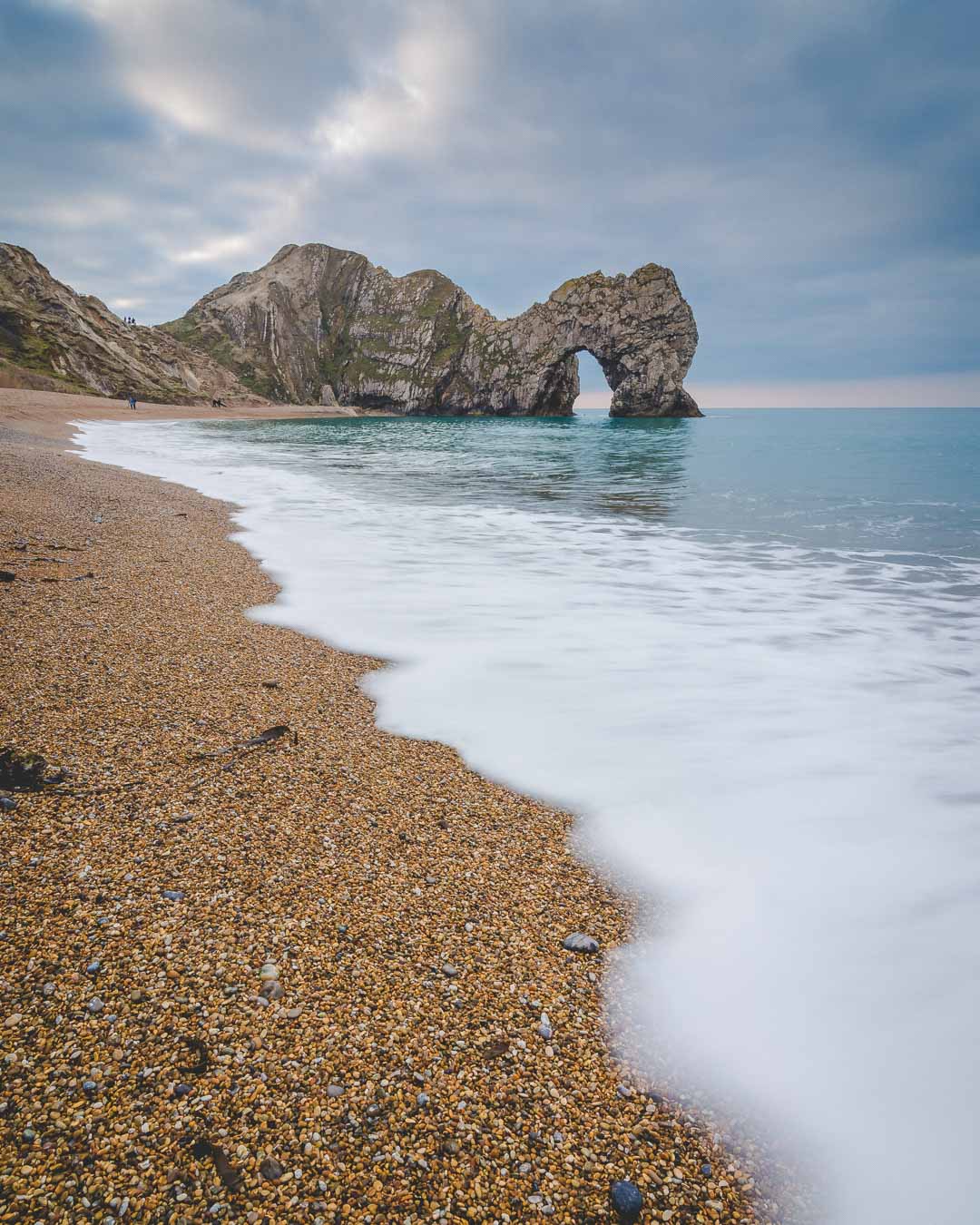
Durdle Door is a massive rock arch made of limestone that ranks in the top 10 most beautiful arches in the world. The hole that looks like a gigantic door has been sculpted by the crashing waves for thousand of years.
Listed as a UNESCO World Heritage Site, visitors can see it from the beach or from the cliffs. You can try the 45min hiking trail to Lulworth Cove, or the 2 hour-hike to Worbarrow Bay, 2 other wonderful gems of the Jurassic Coast.
Read more: Best Places to Visit on the Jurassic Coast
27. Old Harry Rocks
Old Harry Rocks are spectacular white cliffs also located on the Jurassic Coast in South England, about 10min drive from the quaint village of Corfe Castle.
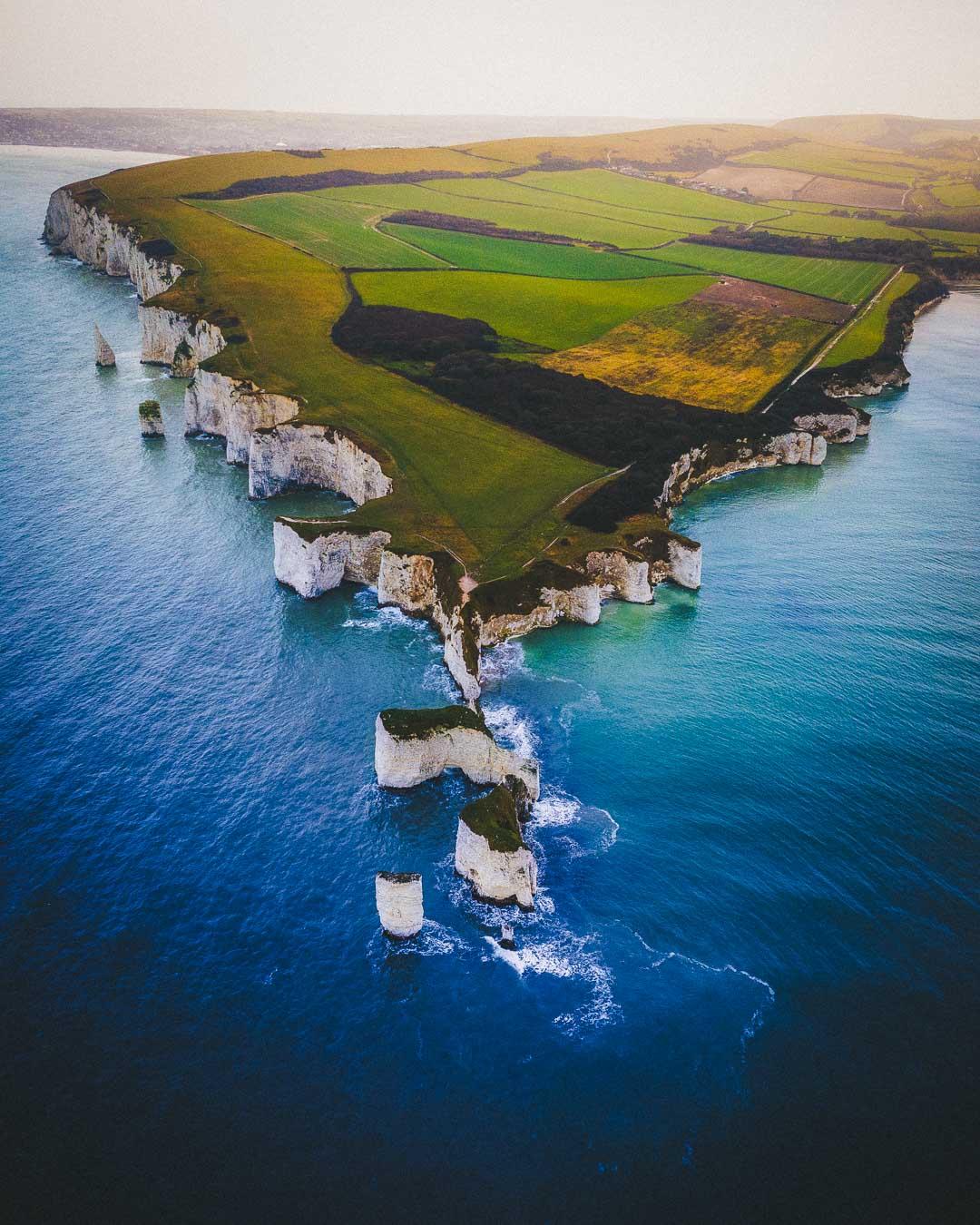
The name Old Harry refers to the single rock formation standing furthest out to sea. There was another chalk stack until 1886, but erosion made it disappear and fall into the sea.
The path leading to the cliffs is pretty easy, it’s a 15min walk to Studland Viewpoint, where you’ll have a first look of the cliffs before reaching Old Harry Rocks, only 3min walk from the viewpoint.
Read more: Discover Old Harry Rocks
28. Cheddar Gorge
Cheddar Gorge is located about 40min drive south from Bristol in Somerset. Although the site is simply breathtaking, it’s an underrated spot in England, little-known from tourists.
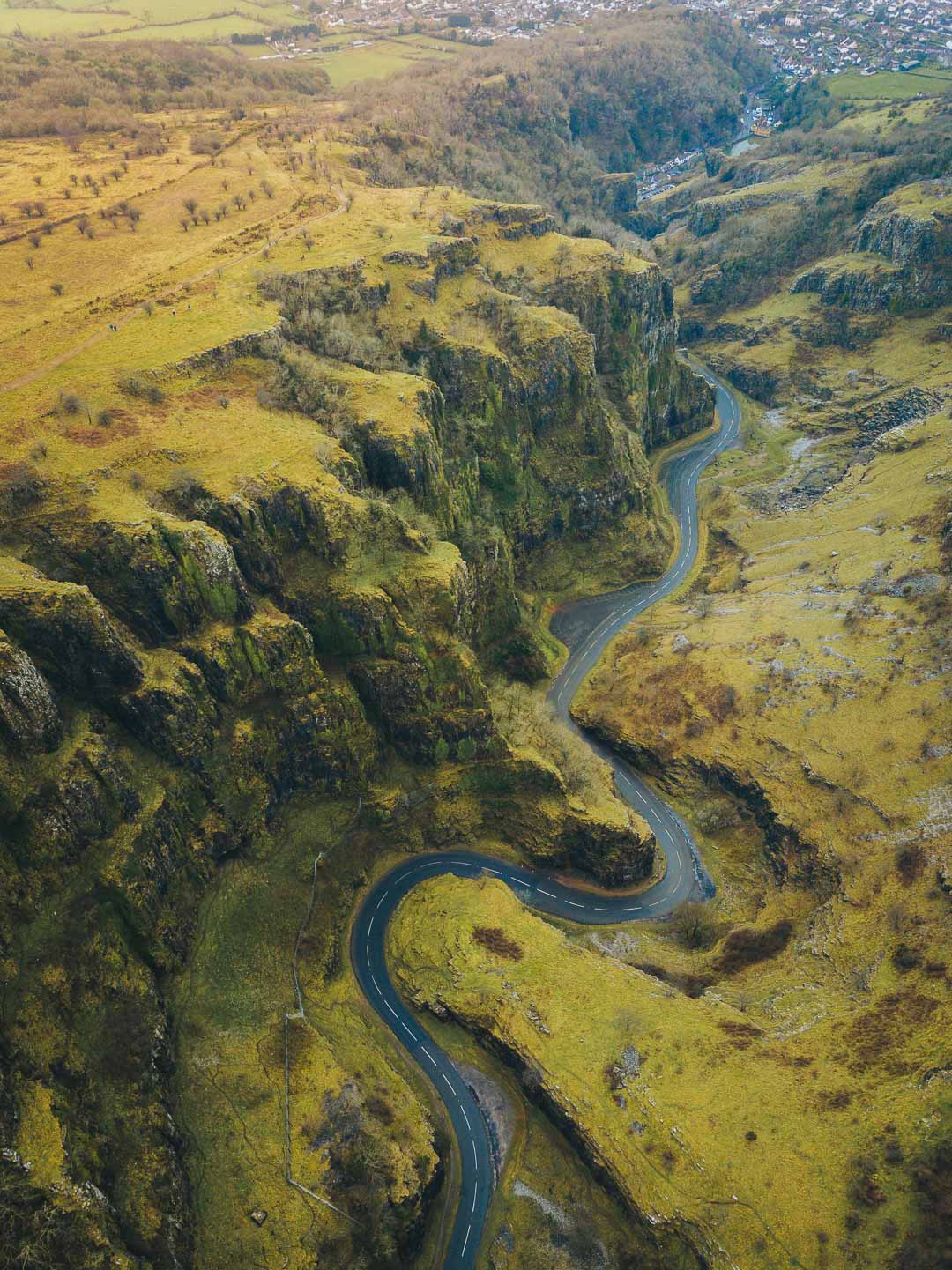
Formed about 1,2 million years ago, Cheddar Gorge is made of limestone and is the largest gorge in all the UK. It’s there that the oldest complete human skeleton was discovered, in 1903.
You can visit Cheddar Gorge in different ways: you can drive through it and stop by in the parking spots along the road, hike the Cheddar Gorge Walk Path or visit the caves.
Read more: Discover Cheddar Gorge
29. Hyde Park
Hyde Park is one of London’s 8 Royal Parks and the largest in the city with an area of over 140 hectares.
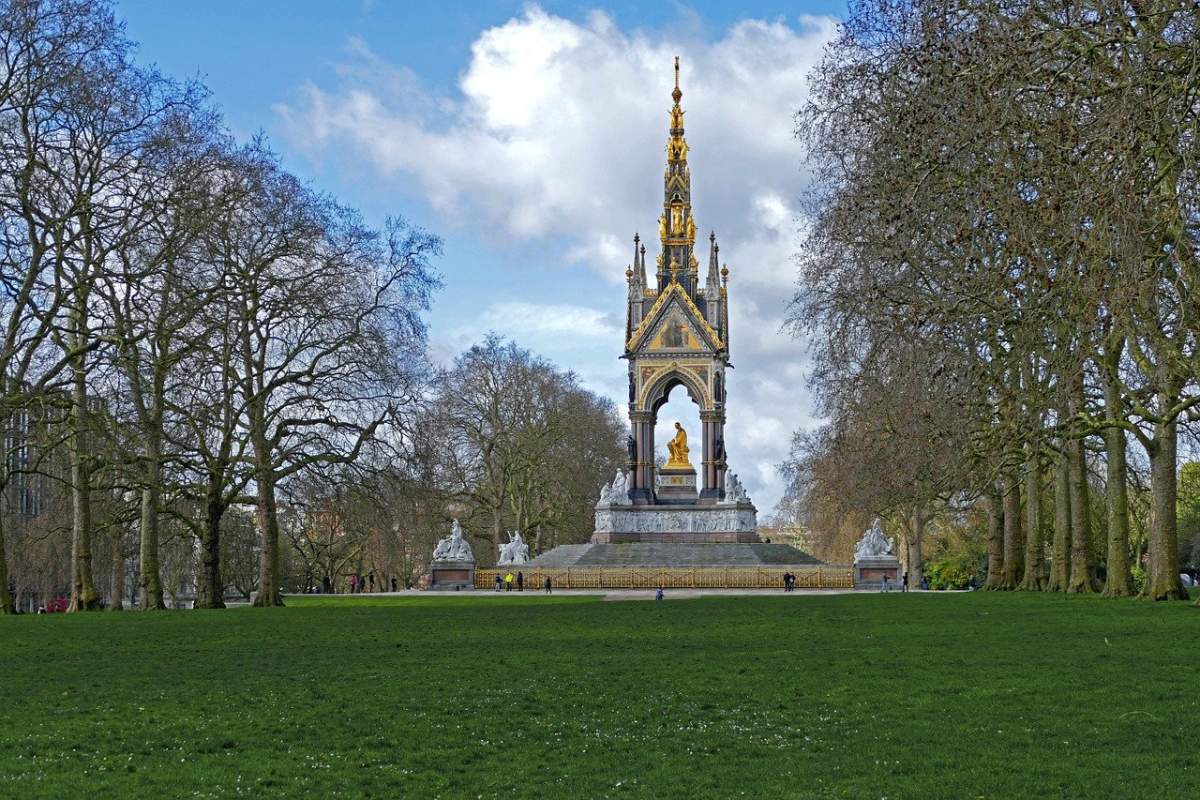
The park was acquired by King Henry VIII in the 16th century as his private hunting ground. He and his descendants continued to use it as a hunting ground until 1637, when King Charles I decided to make it a public park. The park as it is today was designed in the early 19th century by the British landscape architect Burton.
Like Central Park in New York, Hyde Park is now the green lung of London where locals come to disconnect from the hustle and bustle of the city, run or bike. Definitely an unmissable stop when visiting London!
30. St Michael’s Mount
Located a few hundred meters from the southwestern tip of England in Cornwall, the island of St Michael’s Mount is a small rock topped by a fortress, accessible at low tide.
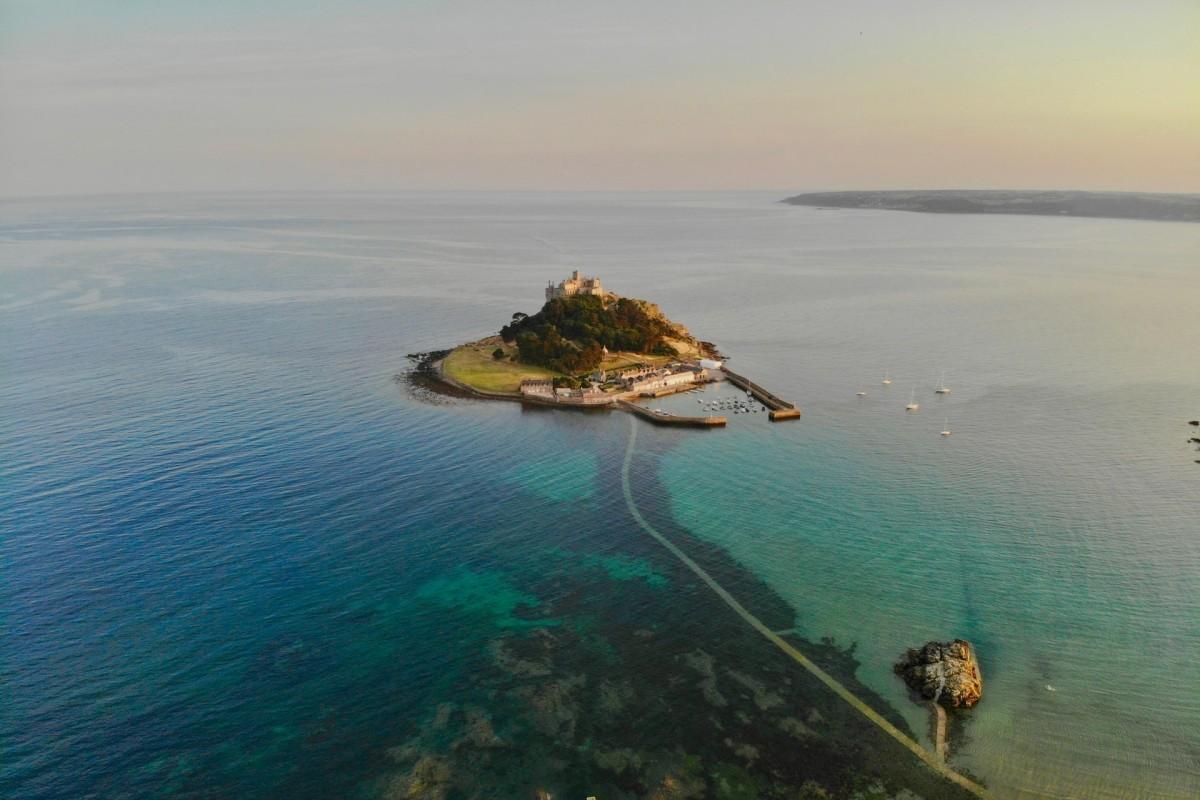
A Celtic monastery would have developed there from the 8th century, and the island would have become a place of pilgrimage. In the 11th century, King Edward the Confessor offered St Michael’s Mount to the Abbey of Mont-St-Michel in Normandy (France) to build a Benedictine monastery. The monastery was then dissolved by King Henry VIII following the English Reformation, then bought in 1647 by Colonel John St Aubyn, whose family still lives in the castle.
Surrounded by beautiful lush gardens, with its harbor and typical stone buildings, St Michael’s Mount is the ideal place to spend a good time between visits and relaxation in a beautiful setting, far from time.
31. Sherwood Forest
The famous Sherwood Forest is located north of Nottingham and stretches into South Yorkshire.
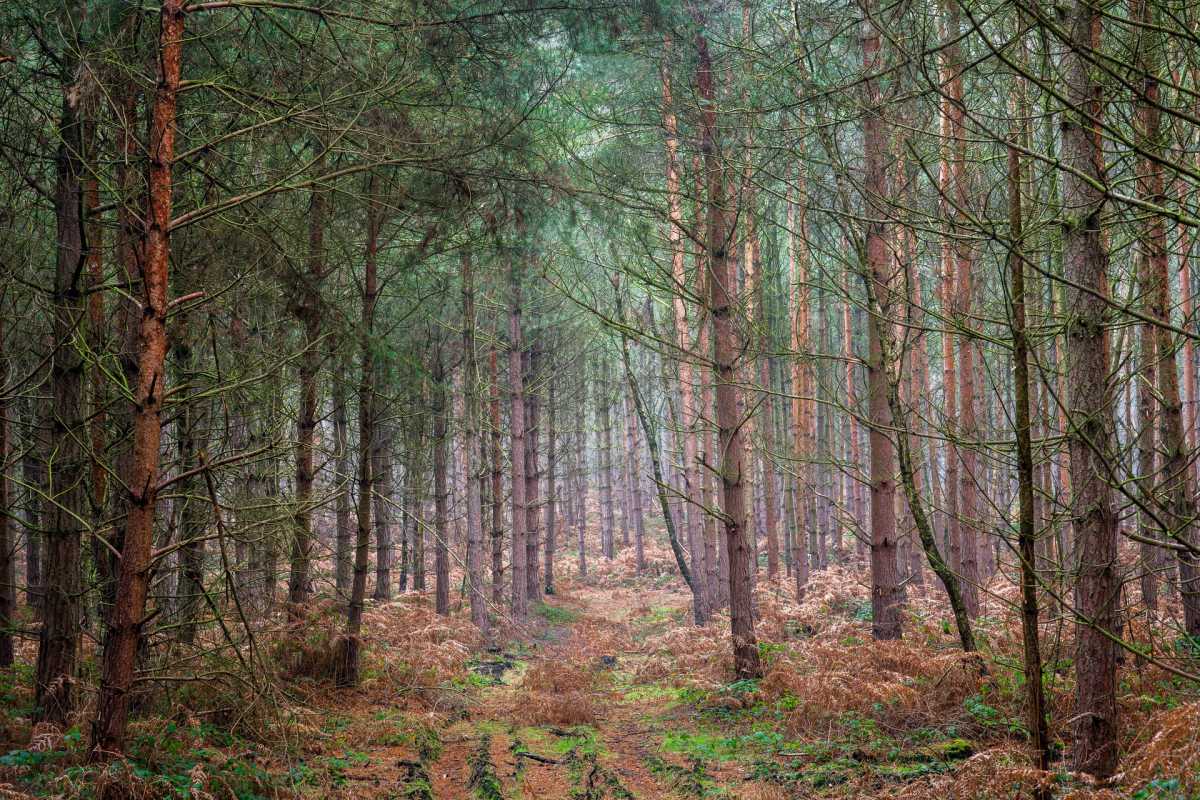
The forest is famous as one of the places associated with the legend of Robin Hood. Sherwood Forest covers over 1,000 acres around the village of Edwinstowe, including the Sherwood Forest Country Park.
The main attraction for visitors, aside from hiking the Robin Hood Way, is the search for the lair of Robin Hood and his gang of outlaws near the great Major Oak. Visitors also come to the Robin Hood Festival every year, a week-long event celebrating medieval times with troubadours, knights fights…
32. Peak District National Park
In the center of England lies Britain’s oldest National Park, the Peak District National Park.
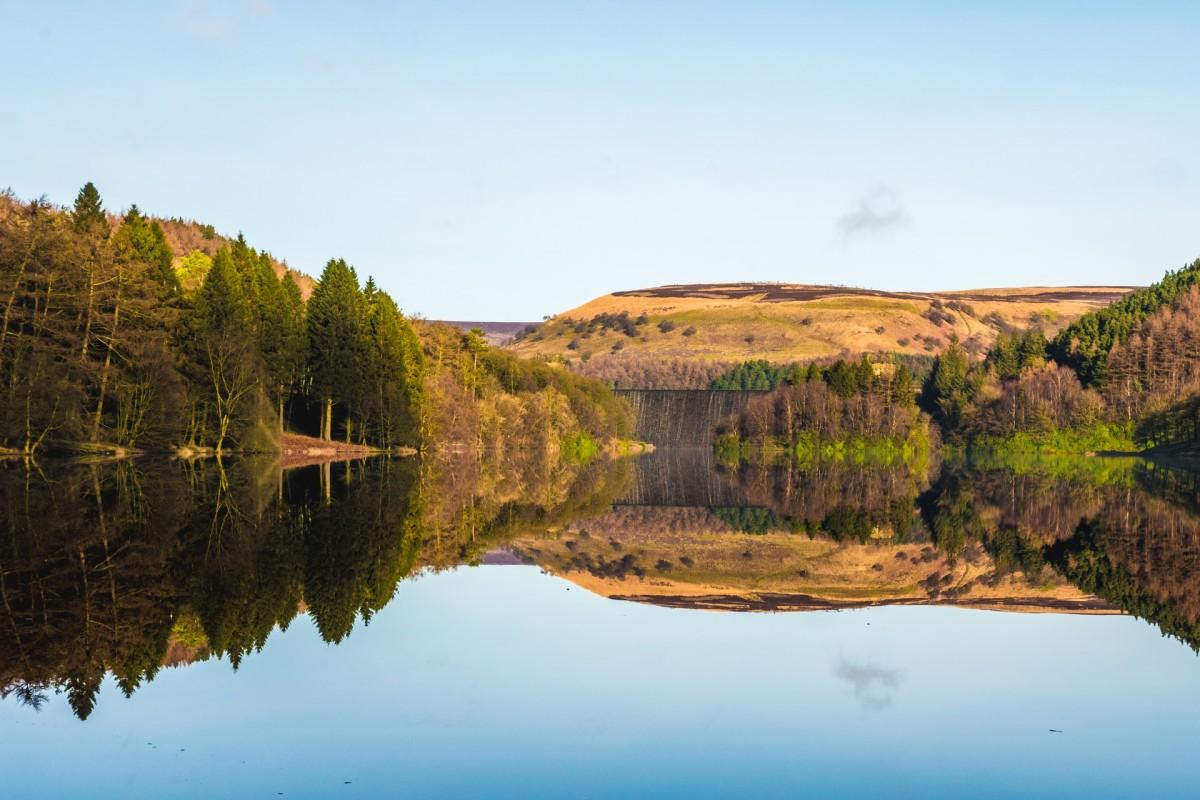
Located less than an hour drive from major cities such as Manchester, Sheffield and Leeds, the Peak District is a mid-mountain region that attracts millions of visitors each year to enjoy the beautiful scenery found here. With its natural hills, valleys and gorges, the park is ideal for outdoor activities. The Peak District walks are among the best in the country!
There’s so much to do in the Peak District that you won’t know where to start! There are many cute villages like Bakewell, the thermal towns of Buxton and Matlock Bath, as well as many heritage sites including country houses, that are a major feature of this beautiful area.
33. Dartmoor National Park
The Dartmoor National Park is located in the Devon region, bordered by the English Channel in the south and the Bristol Channel in the north.
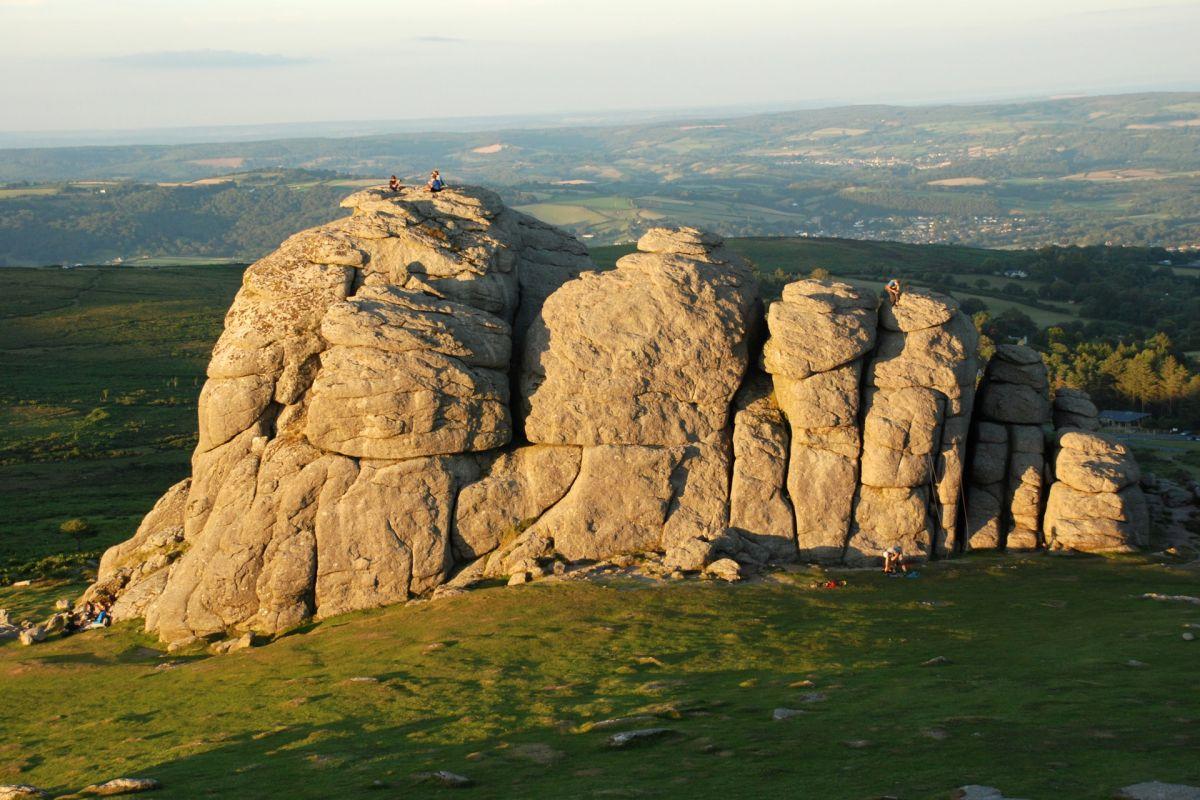
This wide and wild park is mainly known for its tors, these hills covered with huge granite rocks that visitors love to climb. There are no less than 160 of them in the park, the most famous being Haytor and Hound Tor. In addition to the tors, there are waterfalls, stone quarries, sheep, ponies and pretty villages that you’ll love to discover.
Dartmoor is protected by the National Trust, but also because the largest landowner of Dartmoor is Prince Charles himself. The Duke of Cornwall owns nearly 300 kilometer squares of the park, with many farms, houses and stores. The royal family’s priority is to preserve these lands and to maintain a sustainable agriculture.
34. Lake Windermere
Both the largest natural lake in England and the name of the small town on its eastern shore, Windermere is a prime destination for summer vacations and is arguably one of the most beautiful places in the UK.
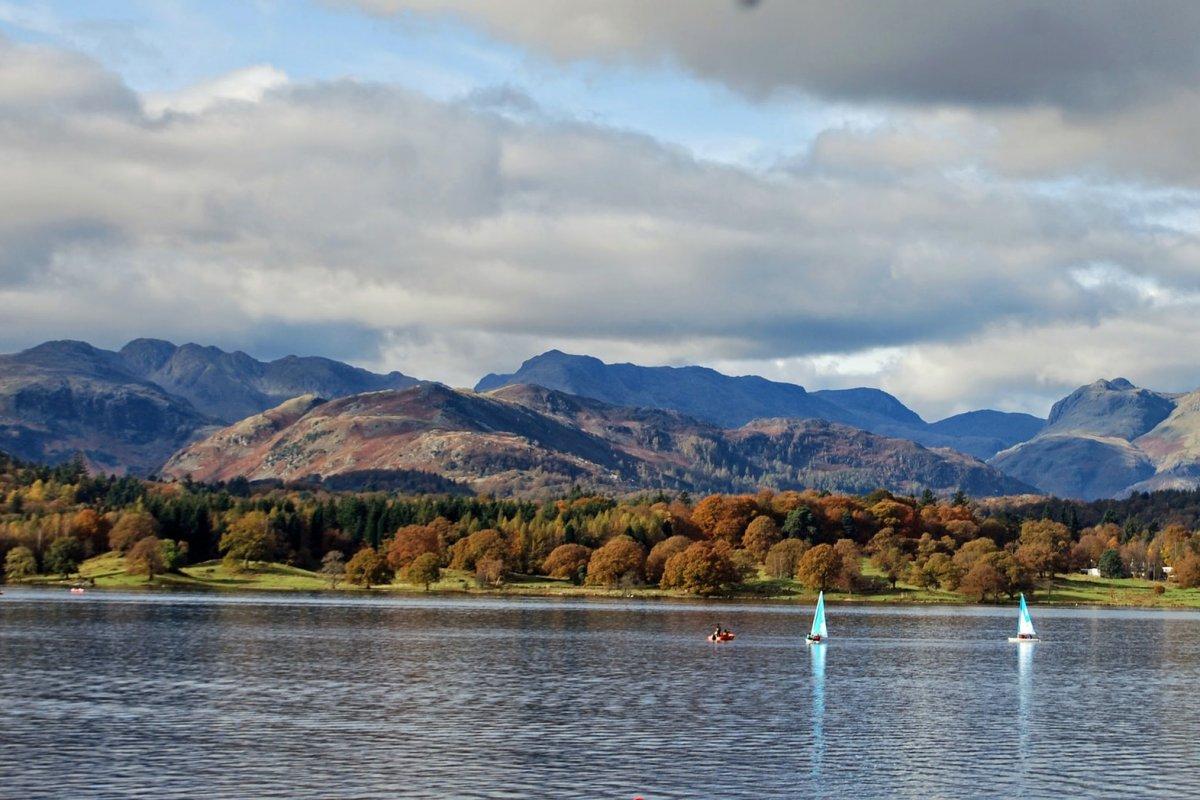
Located in the Lake District, Windermere was formed about 13,000 years ago when glacial meltwater was held back by moraine left behind by the glaciers during the Ice Age.
Surrounded by picturesque landscapes, you can enjoy the raw beauty of the hills around the shoreline by boarding one of the steamboats or taking a walk around the area.
35. Glastonbury Tor
Located 1 hour drive south from the cities of Bristol and Bath, Glastonbury Tor is a hill where a tower stands as a landmark for miles around.
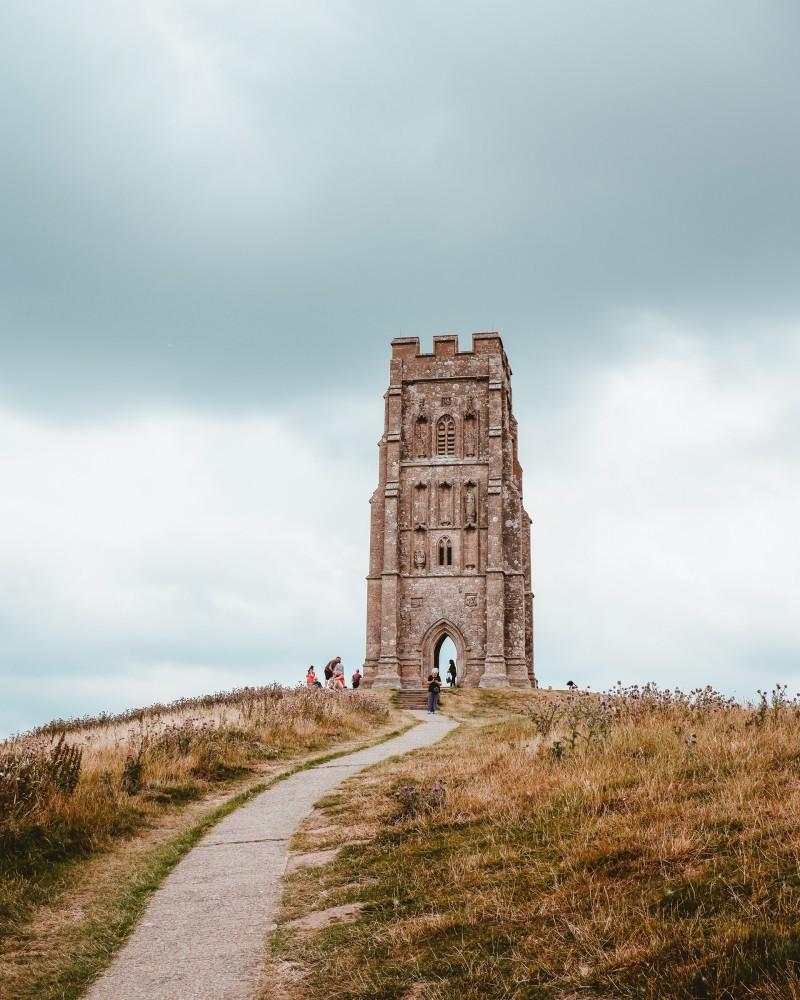
The conical shape of Glastonbury Tor is natural, composed of successive layers of clay and limestone with a hard sandstone top. The tower of St. Michael that stands there is the only remnant of the 14th century church that was abandoned following the dissolution of the monasteries in 1539 and the hanging of the abbot of Glastonbury.
This hillock, classified as a historical monument, rises to 158 meters and attracts a large number of visitors, curious about the legends surrounding this place or simply coming to admire the view of the surrounding regions of Somerset and Wiltshire.
So, this was the list of the 35 most famous landmarks in England to put in your bucket list. But I’m not done yet!
Keep reading to discover 36 more wonderful spots that could’ve been in the top 35 above. 👇
More Famous England Landmarks
England has such a rich heritage it was hard to keep the list under 35! We’ve added 36 popular landmarks in England you should visit if you’re around, breakdown by region (there are 9 different regions in England).
Let’s jump to it! 🚀
Landmarks in London
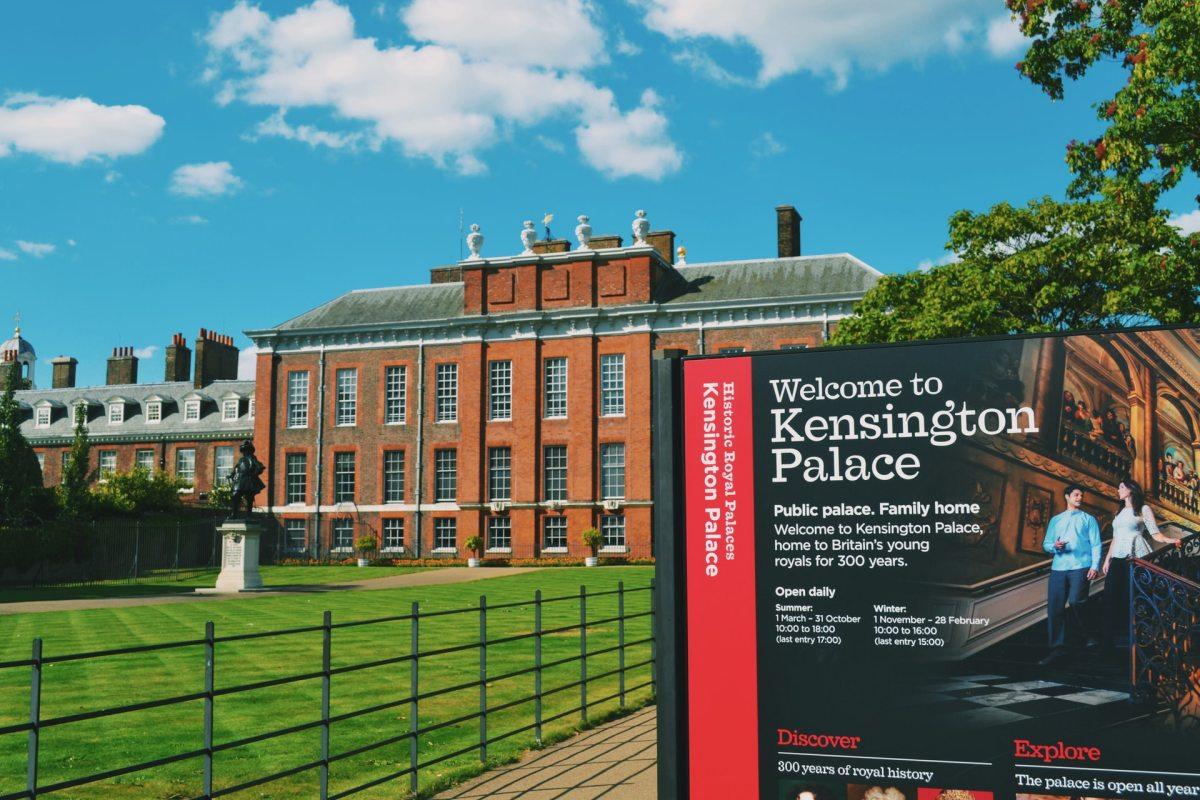
Kensington Palace
- Kensington Palace
- Tate Modern
- The National Gallery
- Hampton Court Palace
Read more: Most Famous Landmarks in London
Landmarks in South East
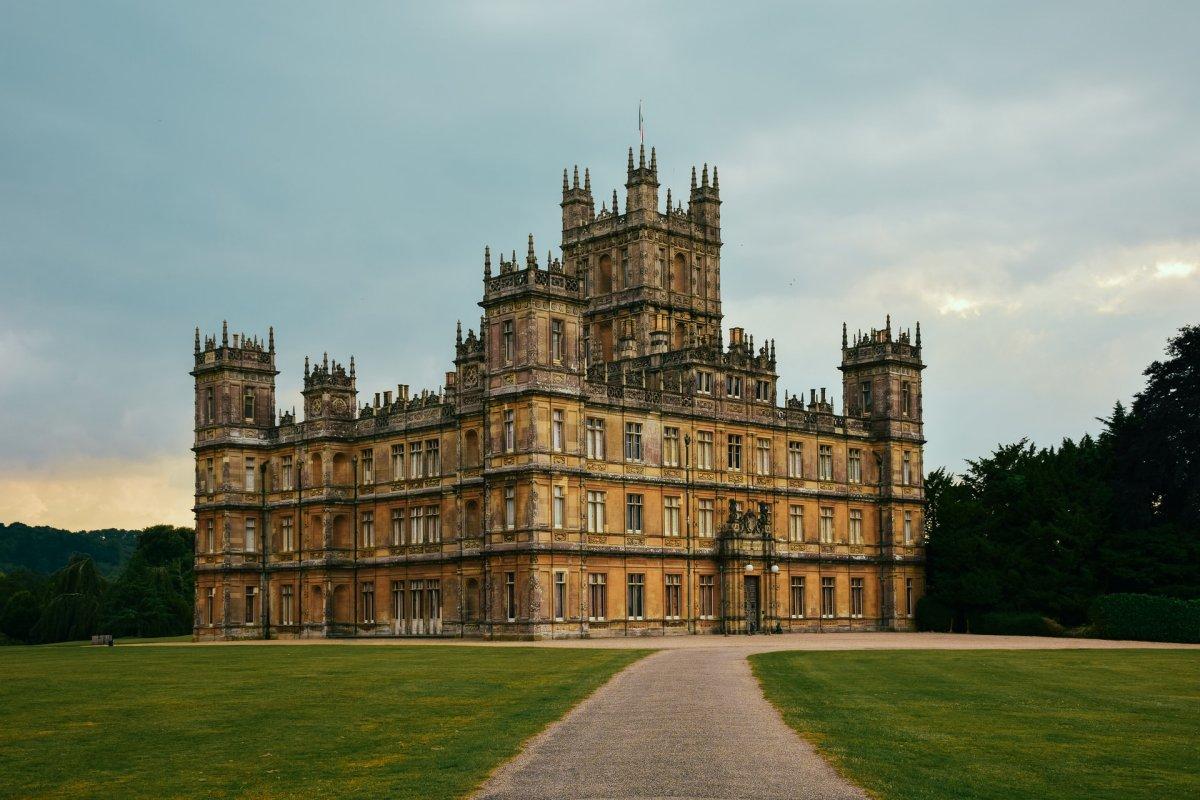
Highclere Castle
- Royal Pavilion
- Oxford Castle & Prison
- Oxford University
- Highclere Castle
Landmarks in South West
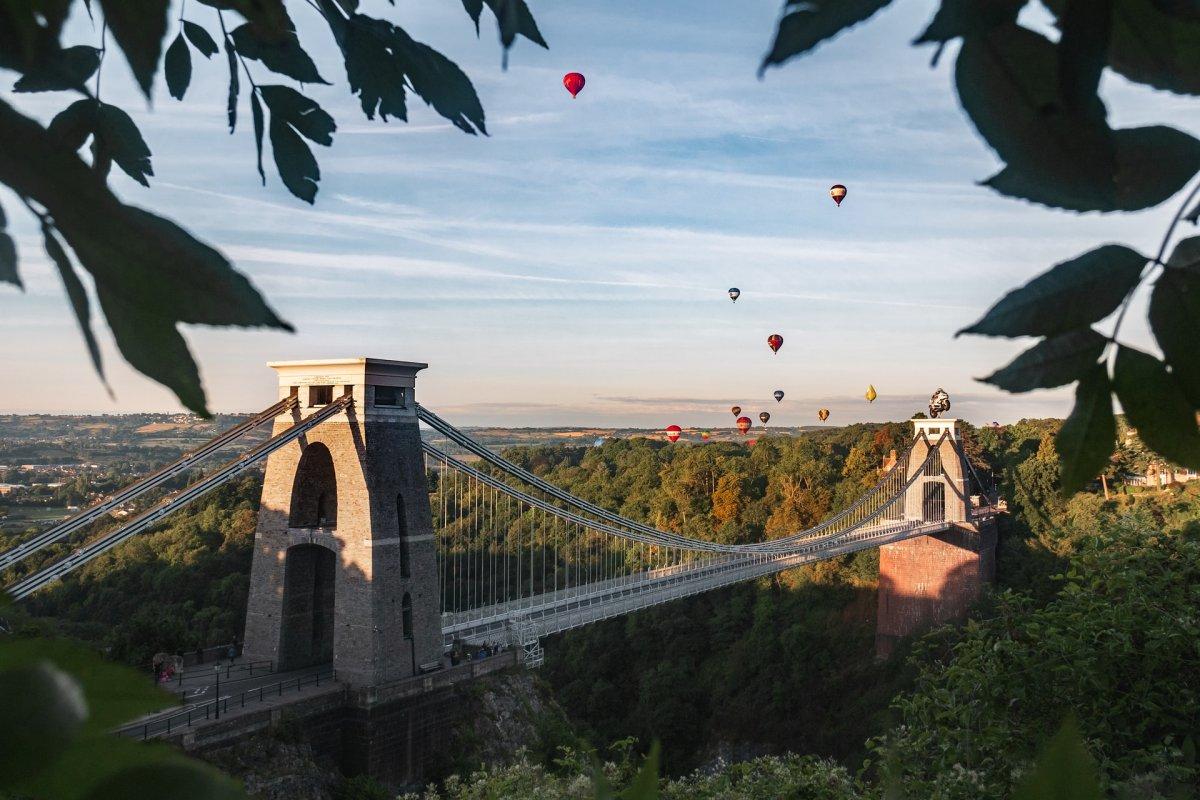
Clifton Suspension Bridge
- Clifton Suspension Bridge
- Salisbury Cathedral
- Arundel Castle
- Tunnels Beaches
Landmarks in East of England

University of Cambridge
- University of Cambridge
- Norwich Castle
- Peterborough Cathedral
- Southwold Pier
Landmarks in East Midlands
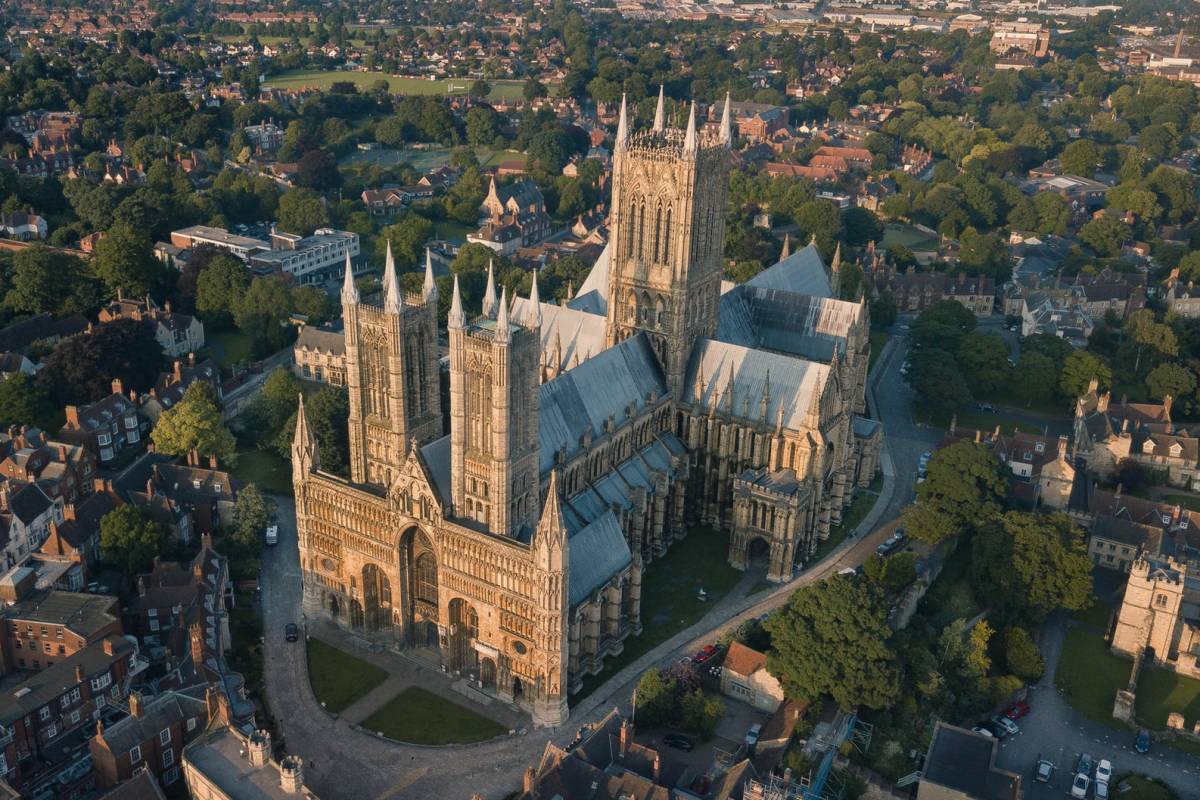
Lincoln Cathedral
- Lincoln Castle
- Lincoln Cathedral
- Wollaton Hall
- Heights of Abraham
Landmarks in West Midlands
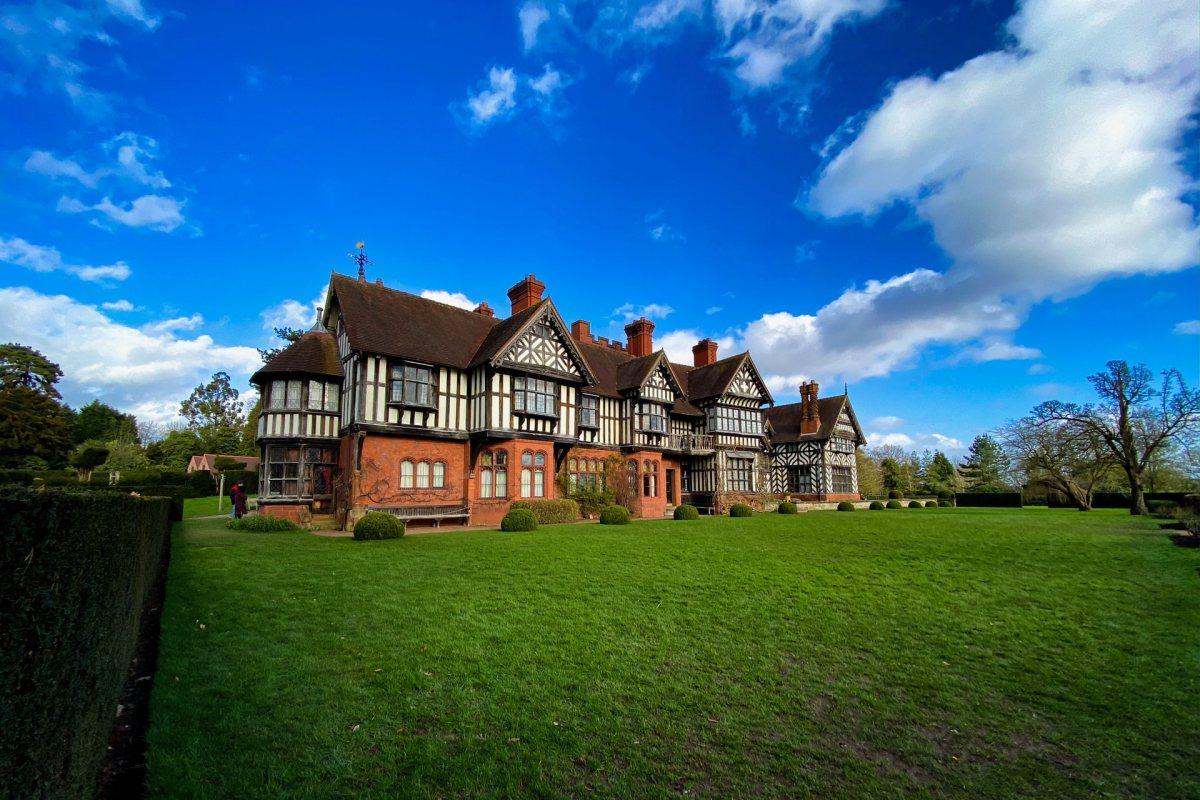
Wightwick Manor
- Coventry Cathedral
- Dudley Zoo & Castle
- Wightwick Manor
- Birmingham Back to Backs
Landmarks in North West
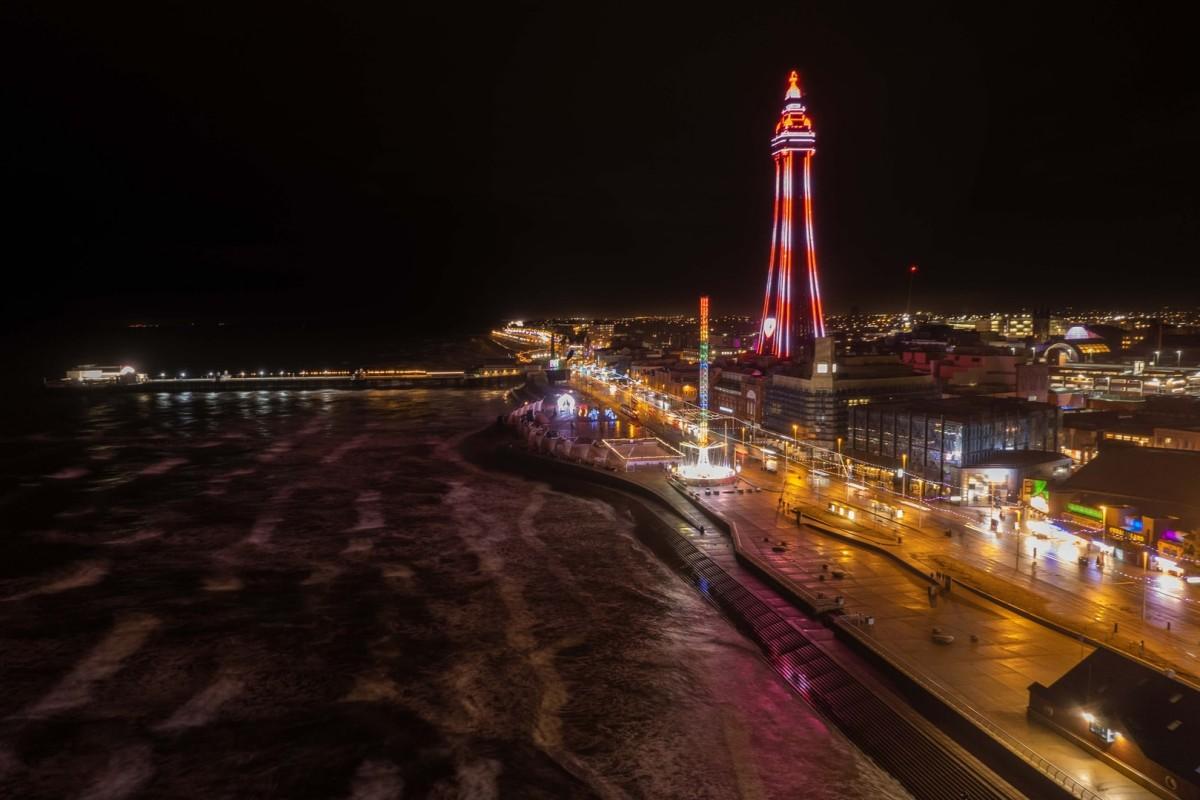
Blackpool Tower
- Liverpool Cathedral
- Chester Cathedral
- Blackpool Tower
- Lancaster Castle
Landmarks in North East
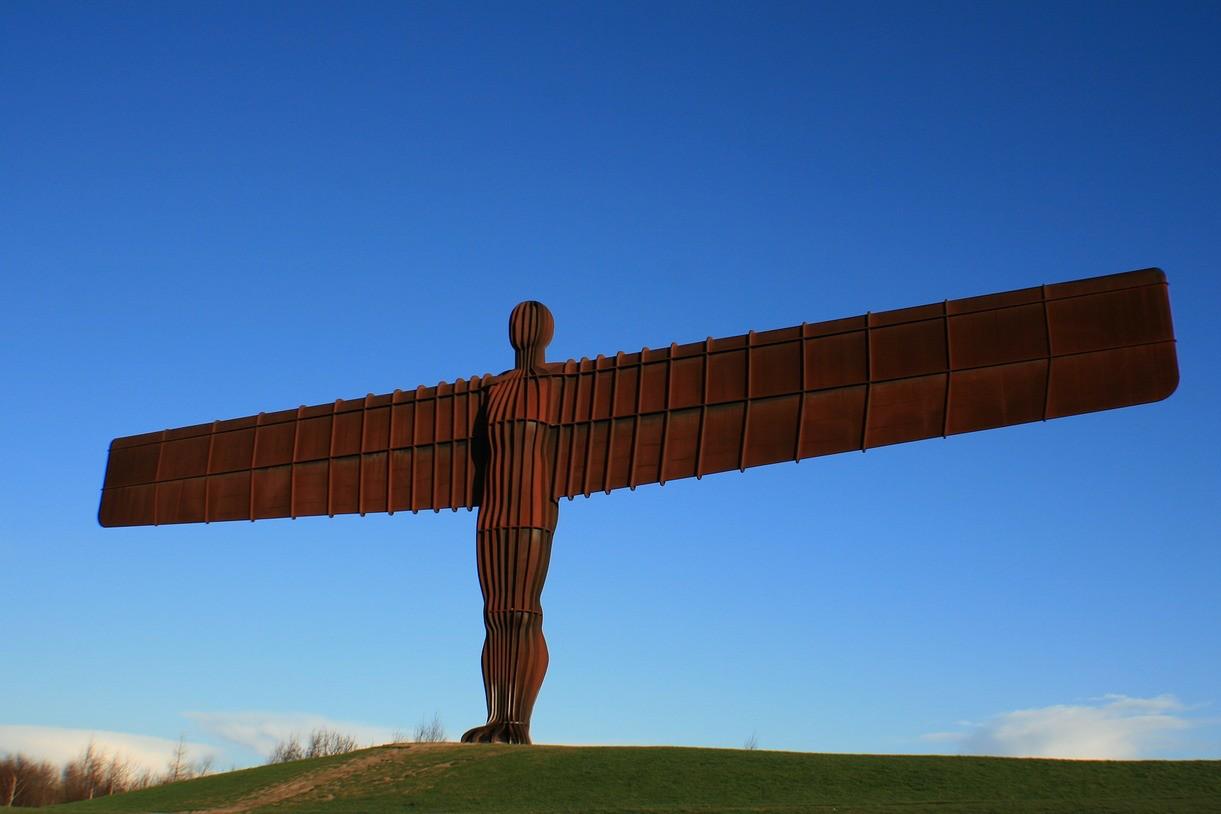
The Angel of the North
- The Angel of the North
- Victoria Tunnel
- Bamburgh Castle
- Gateshead Millennium Bridge
Landmarks in Yorkshire and the Humber
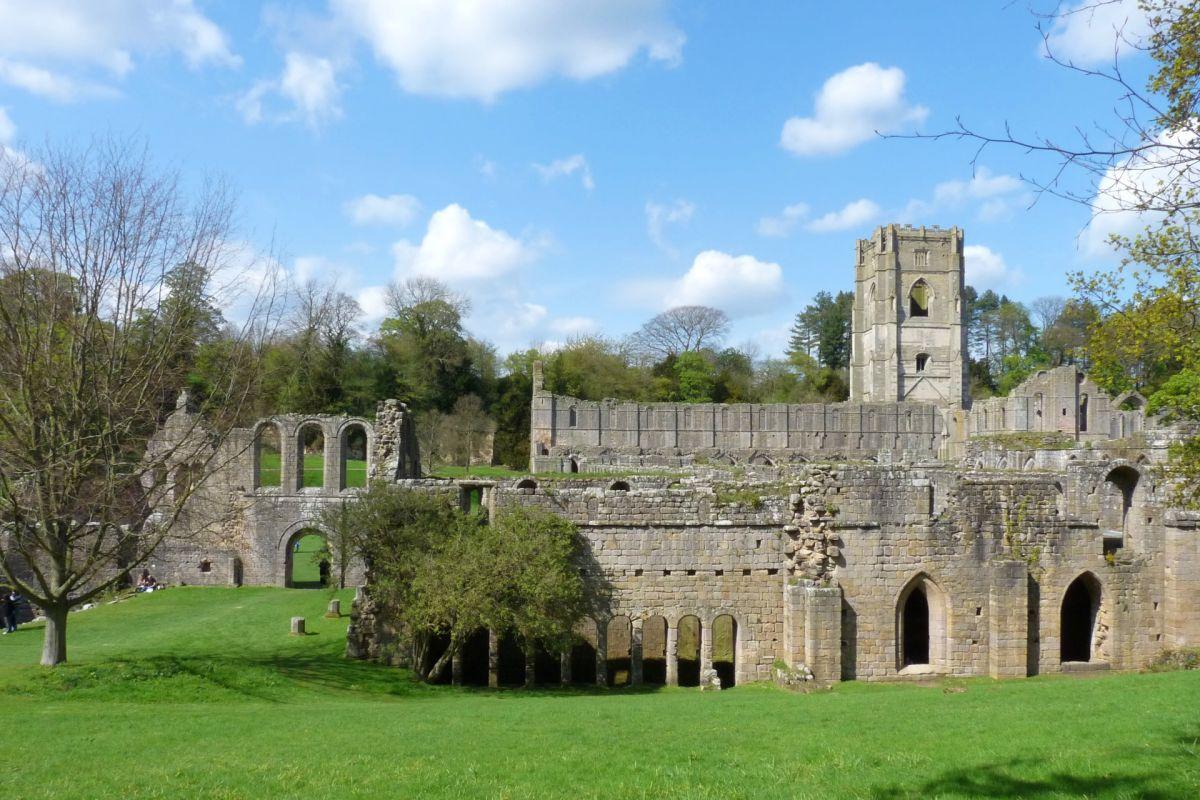
Fountains Abbey
- Fountains Abbey
- The Piece Hall
- Standedge Tunnels
- The Humber Bridge
Map of the Famous Landmarks of England
Here’s the map of the 71 famous English buildings and monuments. To get it, simply click on the image below to open it in Google Maps. Then click on the “star” icon to save it to your own maps.
More England Landmarks
Want to discover more exceptional landmarks in England? Well, I have other posts will be useful to you!
Discover more England famous landmarks thanks to these following city-based guides:
- Famous Landmarks in London
- Famous Landmarks in Manchester
- Famous Landmarks in Liverpool
- Famous Landmarks in Bristol
- Famous Landmarks in Birmingham
- Famous Landmarks in Leicester
You can also check the full guide of all the famous UK landmarks 👉 The Very Best Landmarks in the UK.
For more, you can check all our UK guides.
I hope you’ve found all the information you needed to make your England bucket list through these posts. Don’t hesitate to comment below if this is the case, I would be very pleased to read your feedback!
Loved this post? Share it with your friends by using the buttons below, I’m sure they’ll love it 🙂
Pin this to Pinterest!
Enjoyed this guide? Then help a fellow traveler and pin it! They'll most definitely love you for it, 100% guarantee.
